Recent Water Damage Posts
Water Damage Within Your Glastonbury Property
5/8/2024 (Permalink)
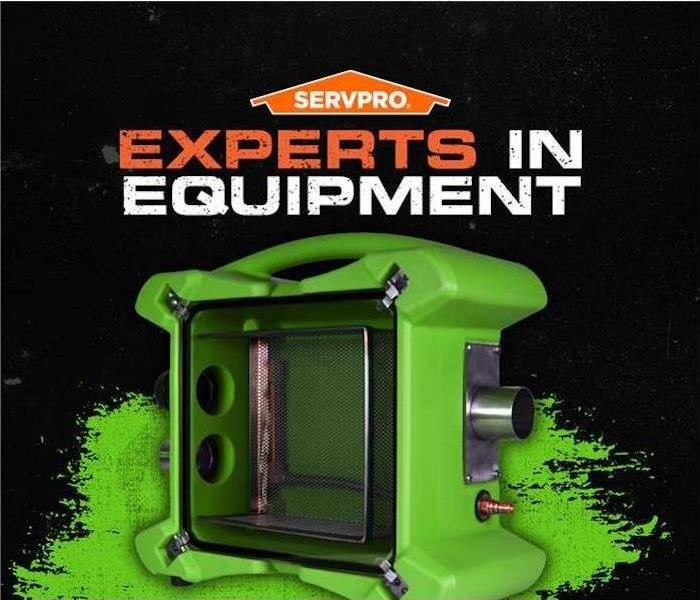 SERVPRO offers Glastonbury area water damage and mitigation "Like it never even happened." We stock advanced equipment from extraction to drying.
SERVPRO offers Glastonbury area water damage and mitigation "Like it never even happened." We stock advanced equipment from extraction to drying.
Call SERVPRO® in Glastonbury for Water Damage Restoration
Any home or business owner will cringe at the mere thought of water damage and all that is involved in the cleanup process. No matter the cause of the water emergency, you need it fixed – and fast. The longer a property has standing water or moisture lurking, the more damage multiples and bring the possibility of hazardous mildew and mold development. SERVPRO is available 24 hours a day, with rapid emergency response times. We arrive quickly to work, providing results for Glastonbury homes and businesses. We’re Faster to Any Size Disaster™, coming in just four hours or less of your initial call to our customer service team.
To get started on your water damage project in Glastonbury, our team comes in to assess the damage to understand the best way to proceed. The crew chief assigned to your property inspects the impacted materials, the surfaces that must get addressed, and the type of water present. What this does is help us to select the right equipment, the number of pieces necessary to facilitate cleaning and drying, and everything we need to achieve our goals.
24-hour Response Matters with Water Removal Services
Water-related incidents require prompt action if you want to salvage belongings and materials. Our IICRC-certified SERVPRO technicians have access to a wealth of tools and equipment in our warehouse, and we stock our Green Fleet with many of the following:
- Water removal equipment – We have a broad range of industry-proven equipment and tools, including gas-powered and submersible pumps, truck-mounted extractors, wet-dry vacuums, weighted extractors, and carpet wands. We determine the level of water saturation and select tools accordingly. We continuously monitor progress and adjust equipment accordingly for water removal and drying.
- Dehumidification and drying equipment – Addressing relative humidity (RH) is paramount with all water damage calls. We use industrial-grade fans, desiccant dehumidifiers, and other equipment to restore RH to normal levels so that moisture is not an issue.
- Cleaning and deodorizing products – All surfaces must be thoroughly cleaned and sanitized for water restoration projects. Additionally, our Odor Control Technicians (OCT) know what to select to eliminate foul, musty odors rather than masking them.
How Does SERVPRO Handle Areas with Hidden Moisture?
Water migrates to dry spaces while moving along a path of least resistance. SERVPRO technicians are trained in structural drying to offer specialized care for all projects. Anywhere moisture migrates gets thoroughly inspected and addressed, such as behind your baseboards, underneath cabinets, and beneath the flooring. Our unique tools and methods can often get to hidden moisture with little or no disruption to your building materials or structural elements. Some of our moisture detection tools include:
- Hygrometers
- Surface moisture meters
- Penetrating/probing moisture meters
- Thermal imaging equipment
Depending on the areas where moisture lurks, we may use controlled demolition measures to address it. Options usually involve:
- Weep/Drill Holes – We can create drill (weep) holes and remove baseboards to get into water pooling areas. Such action allows for an opening to relieve water and boost air circulation with positive air pressure.
- Positive Air Pressure – After handling pooling within tight spaces or behind walls, we use positive air pressure units. The units come with outlet hoses that our technicians place into the drilled holes to force warm air inside for faster drying.
We Have you Covered for all your Insurance Documentation
One less thing you have to worry about when working with SERVPRO for your water remediation project is all of the insurance paperwork. We ensure all documents get filled out correctly, so you have everything you need to file your claim with your insurance provider. SERVPRO knows how important it is to have a trusted liaison when faced with any restoration emergency.
SERVPRO of Glastonbury/Wethersfield is the team to call for all water damage repair and restoration needs. Request help online or call (860) 633-8791.
How To Dry Out Your Basement
6/15/2022 (Permalink)
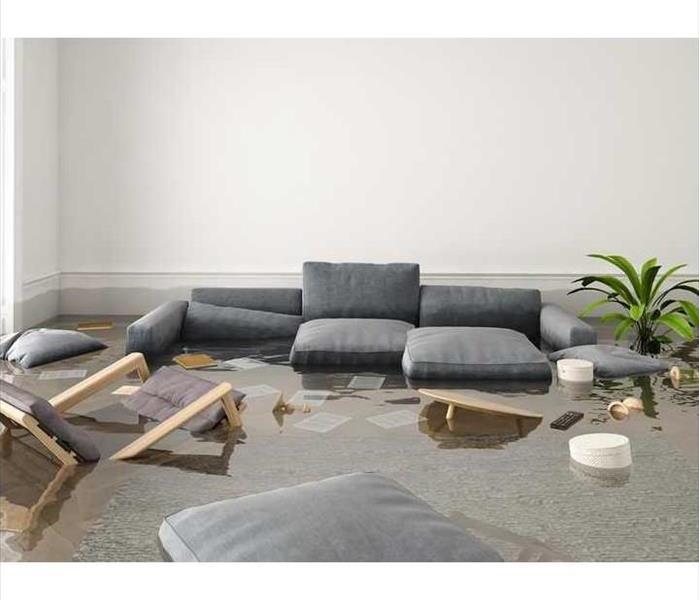 A flooded basement can feel like a total loss
A flooded basement can feel like a total loss
If your carpeted basement is flooded, follow these rules:
- If the floodwater was clean (broken pipe, burst washing machine supply hose or a foundation leak), you can probably dry out and save your carpet.
- But if you had a sewer backup, washing machine drain water spill or river flood, you need professional help. Pros are the only ones with the right equipment to get your basement dry and disinfected in the shortest possible time.
Either way, act fast! If the carpet isn’t dry within 72 hours, it’ll start to grow mold. Assuming your basement was flooded with clean water, here’s how you can do the cleanup yourself.
If your home or business suffers a flood, call SERVPRO of Glastonbury/Wethersfield today at 860-633-8791 to provide immediate expert water damage cleanup
Be Safe Above All
First, turn off the power to the basement. If you’re not sure which breakers power the basement, flip the main circuit breaker. If your electrical panel is in the basement, call an electrician to turn off the power.
Next, remove any extension cords and power strips from the floor and unplug or switch off all electrical appliances (washer, dryer, HVAC)—and if your appliances or furnace was under water, call appliance and HVAC specialists before plugging any of them back in. Ask the electrician (if you hired one) to repower the upstairs and inspect the basement receptacles to determine whether it’s safe to repower them. If not, you’ll have to buy several GFCI-equipped extension cords and run power from upstairs receptacles.
Next, remove all your valuable items from the basement. The longer they sit there, the more moisture they’ll soak up, and that means mold.
Time to Extract the Water
Don’t bother trying to dry out the carpet with a wet/dry shop vacuum—it simply doesn’t have enough power. Instead, rent an extractor (if available) or carpet cleaner, an air mover fan or two, and a large commercial dehumidifier. Rent the largest dehumidifier available (the big ones can remove up to 30 gallons per day, compared with 4 gallons for the largest home units).
Move the extractor slowly across the carpet to suck up as much water as possible. Don’t rush this step! Once the water is out, peel back the carpeting (watch out for the sharp nails) and remove the wet pad. (New carpet pad is inexpensive, so don’t waste time trying to dry the old pad.)
Lay the carpet back on the floor and fire up the air movers and dehumidifier. Keep the basement temperature at or below 75 degrees—a higher temp will accelerate bacterial growth and turn your basement into a petri dish.
If your home or business suffers a flood, call SERVPRO of Glastonbury/Wethersfield today at 860-633-8791 to provide immediate expert water damage cleanup
We're Here For You
The team at SERVPRO of Glastonbury/Wethersfield has the people, skills and equipment to help homeowners recover from water damage resulting from a flood. Call SERVPRO of Glastonbury/Wethersfield at 860-633-8791 any time, day or night.
Other Helpful Blog Posts from SERVPRO of Glastonbury/Wethersfield
SERVPRO of Glastonbury/Wethersfield publishes educational articles on how Glastonbury and Wethersfield residents can protect their homes and businesses from disasters and how to deal with mold, fire, water, sewage, storm and other damage.
SERVPRO of Glastonbury/Wethersfield
We serve East Glastonbury, Glastonbury, Marlborough, Portland, Rocky Hill, South Glastonbury and Wethersfield, Connecticut.
SERVPRO of Glastonbury/Wethersfield
IICRC Certified
Noemi Garcia
Franchise Owner
Call 860.633.8791
Fax 860.216.2762
24-hour emergency service
If your home or business suffers a flood, call SERVPRO of Glastonbury/Wethersfield today at 860-633-8791 to provide immediate expert water damage cleanup
Basement Water Damage - Skedaddle!
5/12/2022 (Permalink)
 Connecticut summer storms cause flooding on roads and houses
Connecticut summer storms cause flooding on roads and houses
If you have a soggy basement, you're among the majority. The American Society of Home Inspectors estimates 60 percent of U.S. homes have wet basements, and 38 percent run the risk of basement mold.
1,000 Gallons for Every Inch of Rain
The water usually comes from rainfall and melting snow. Think about this: A house with a 1,500-square-foot roof sheds 1,000 gallons of water for every inch of falling rain. You may also have rising groundwater, which may even be fed by an underground spring. Once the water accumulates around your foundation, it works its way inside through cracks, joints, and porous material.
Before you call SERVPRO of Glastonbury/Wethersfield you may want to try tackling the problem on your own. Here are some tips on drying out your basement and keeping it free from water damage. If you feel like you’re in over your head or want some expert backup on your team, call our office at 860-633-8971.
Safety First
Is it safe for you to tackle the water damage? If you’re not sure, don’t take a chance. Find somewhere else to stay and call in the professionals until you’re certain your house is safe again.
One way to judge the safety issue is finding out whether you have electrical or "slip and fall" hazards. Don’t walk through your water damaged basement if you can’t see what you’re walking on. Stay out of areas that lack sufficient lighting. And if you try lifting wet materials be careful. When items are soaked with water they become very heavy.
If You Have Water Damage Call SERVPRO Of Glastonbury/Wethersfield At 860-633-8971
Water Damage from Runoff
If you know the water damage is from runoff the probable cause is rainwater or melted snow that isn't routed away from your house. A damp crawl space or wet basement walls and floors just after a storm or as snow melts are telltale signs the problem is runoff. Runoff percolates through porous topsoil and then stops at the compact soil near the base of the foundation. Hydrostatic pressure forces the water through gaps or cracks in walls and footings. Water also moves through porous walls by capillary action.
Carefully inspect your basement, looking for where runoff can enter. Check that the ground outside your basement foundation slopes away from your house at least one inch vertically for every foot of horizontal travel. Be sure downspout runoff isn't pooling or percolating into the soil near your home’s foundation during a storm, and that downspout seams aren't leaking.
Fix Cracks
Patch and seal any cracks you find in your basement walls or foundation. Use a polyurethane masonry caulk for small cracks. For 1/4-inch or larger cracks, use hydraulic cement, which expands as it dries.
Your driveway curbs should channel rain and other runoff to the street, not onto your property. You can also check for unsealed cracks in your driveway. Driveway cracks can allow water to collect below grade.
If You Have Water Damage Call SERVPRO Of Glastonbury/Wethersfield At 860-633-8971
We know of one homeowner who had basement water damage because the property needed a swale. Houses on hilly sites can use a shallow trench with gently sloping sides, a swale to catch and divert runoff away from the house. Once this homeowner created a swale the basement water damage stopped.
More Water Damage Information On Our Blog
You can learn more by reading other posts about water damage on our blog and the blog of our sister franchise, SERVPRO of Bloomfield/Enfield:
Safety After A Water Damaged Basement
Saving Water Damaged Electronics
Clean Up Your Glastonbury Water Damage FAST!
Water Damage Dangers
Check Your Home's Vulnerable Plumbing To Prevent Leaks and Floods
Help Is Here
The team at SERVPRO of Glastonbury/Wethersfield has specialized training and experience in fire restoration services, natural disaster prevention, water damage, biohazard cleanup, and natural disaster cleanup. Call SERVPRO of Glastonbury/Wethersfield at 860-633-8971 any time. We have someone standing by to take your call and be faster to your disaster.
How To Replace Washing Machine Hoses - Help Prevent a Flood
5/12/2022 (Permalink)
 Washing Machine floods cause massive water damage in the basement
Washing Machine floods cause massive water damage in the basement
The most vulnerable parts of your washing machine are the hoses. Washers are typically sold with rubber hoses—but these hoses can burst with no warning, spewing hundreds of gallons of water in only one hour! Luckily, there’s a quick, easy and affordable way to prevent a flooding disaster from happening in your home.
Avoid a laundry room water disaster by replacing your washer's old rubber hoses with steel-jacketed ones that won’t split open. Buy hoses that are at least 60" long—that length will make it easier to move and service your washer.
- Remove the old hoses: Turn off your hot and cold water valves, unplug the washer’s electric cord, and remove the drain hose from the drain. Lay a towel down and use a stillson (pipe) wrench to remove the hot and cold hoses from the back of the washer and from the water supply.
- Clean the filter screens on the back of the washer with a brush.
- Install the new steel braided hoses: screw them on to the back of the washer with your fingers and then tighten with the wrench.
- Connect the new hoses to the water supply, matching hot and cold. Open the valves, check for leaks, reconnect the drain hose and plug the washer back in.
Tag the new hoses with the date you installed them. Then, check your hoses every six months and replace them once they are five years old.
Add Another Layer of Protection
Installing a plastic drip pan is another fairly simple way to avoid costly damage from a laundry room flood—in fact it’s required in second-floor laundry rooms. The pan sits under your washer and catches small leaks. Select a pan with a drain so that any water that collects can be diverted to a floor drain. You'll need a helper and perhaps a dolly to set the washer gently onto the pan so you don’t crack it.
Once the pan is in place, check it for accumulated water after each load of laundry.
If your home or business suffers a flood, call SERVPRO of Glastonbury/Wethersfield today at 860-633-8791 for immediate water damage cleanup and restoration of your structure and property
We’re Here for You
The team at SERVPRO of Glastonbury/Wethersfield has specialized training and experience in water damage remediation, fire restoration services, natural disaster prevention, chemical cleanup, and natural disaster cleanup. Call SERVPRO of Glastonbury/Wethersfield at 860-33-8791 any time. Someone is available 24/7 for your emergencies.
SERVPRO of Glastonbury/Wethersfield
IICRC Certified
Noemi Garcia
Franchise Owner
Call 860.633.8791
Fax 860.216.2762
24-hour emergency service
Flooded Basements In Portland
5/11/2022 (Permalink)
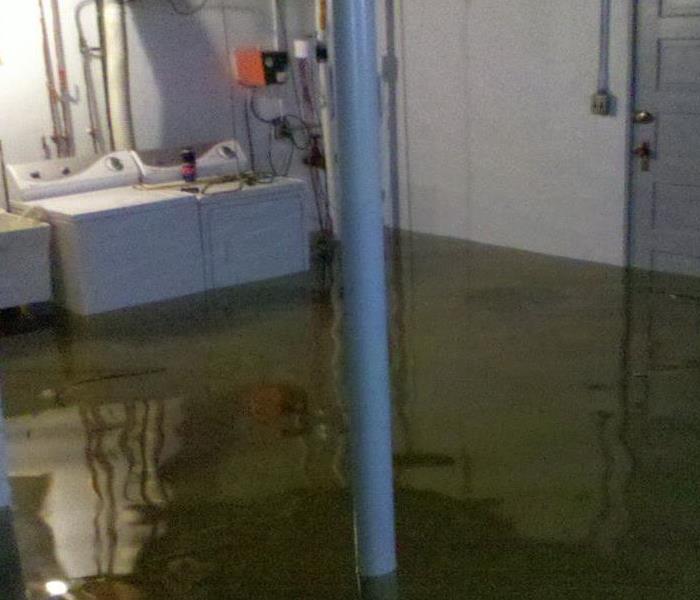 A flooded basement caused by a broken pipe
A flooded basement caused by a broken pipe
Forget the flowers: spring showers bring flooded basements! All it takes is one heavy rainstorm—or maybe an average rain that goes on for multiple days, or perhaps a series of storms. Whatever way it happens, too much water to be absorbed into the ground means it may find its way into your basement. And when it gets there, the property and structural damage can be overwhelming. You may even end up with a persistent mold infestation.
Minimize Basement Flooding and Water Damage Cleanup
Luckily, there are ways to prevent or minimize basement flooding, and ways to reduce basement water damage. Preventing a flood starts with making it difficult for water to get inside, and that starts with proper drainage.
Route Water Away from Your Home’s Foundation
Grading your property is key to preventing springtime basement flooding. Your yard should slope away from your home’s foundation on all four sides so that water doesn’t pool near your house. Take a look at your property after a rainstorm. Is water ponding next to your foundation? If yes, have your yard graded or do it yourself.
Next, focus on your home’s drainage system: your gutters and downspouts. If water spills over the edges of your gutters instead of flowing into the downspout, you’ll need to have the slope of the gutters adjusted. Clear your gutters of debris such as leaves to allow rainwater to flow freely. Once you have water flowing to your downspouts, make sure they direct the water away from your foundation. Place concrete or plastic splash blocks beneath the end of your downspouts to move water away from your foundation and out into the yard. Consider using flexible or rigid downspout extenders to move water even further away from your foundation.
If your home has any basement windows that are partially below grade, install window well covers to protect them from rainwater.
Keep Flooding Damage to a Minimum
If water does enter your basement, the best way to prevent a lot of damage is to quickly discover about the water and pump it back out.
You can detect water entering your basement by placing one or more water sensors at different locations on the floor. Depending on capabilities, the sensors will sound an alarm and/or send an alert to your cell phone—giving you a head start on addressing the problem.
A sump pump installed in your basement will help keep water damage to a minimum, although you’ll still need to dry and clean up your basement. As water reaches the sump, or pit, in which the pump sits, it will trigger the pump to eject the water outside. Be sure to check, clean and maintain your pump so that it’s ready to go when you need it. A battery back-up will keep the pump running in case of power loss.
Also, if you have a floor drain, make sure it is not covered and is clear of debris.
What to Do if Your Portland Basement Floods
If you do get water in your basement, you may be able to minimize the damage and handle the cleanup yourself. If you have several inches or more of water in your basement, however, cleanup and water damage restoration may be better handled by an experienced professional, like SERVPRO of Glastonbury/Wethersfield. We know how to restore water-damaged possessions, appliances, furniture, flooring and more.
Be Safe When Evaluating Your Flooded Basement
Because a flooded basement can be dangerous, take some precautions before venturing to check and clean up the damage.
- Start by turning off the electricity and gas to your basement, if you can do so safely. Or call a plumber and electrician—or SERVPRO of Glastonbury/Wethersfield—to do the job.
- A flooded basement presents slip-and-fall hazards as well as puncture risks, so protect your feet with sturdy rubber boots and your hands with thick rubber gloves.
- Water-soaked furniture, boxes, etc. will be surprisingly heavy to lift, so avoid injuring yourself by lifting lighter loads and using your legs rather than your back to lift.
- Another danger is that of a water-soaked ceiling. A wet ceiling may pose the risk of electrocution, so don’t turn on ceiling fans or light fixtures if you see water damage. Worse, if you notice your basement ceiling is sagging, stay out of the basement, since it could collapse on top of you.
Removing the Water
Once you can safely enter your basement, first try to find out where the water is coming from. Typically, it’s going to be a crack in the floor or foundation or around a window frame. If water is still entering your basement, use towels or rags to plug the leaks.
Check your floor drain if you have one and unclog it if necessary to allow the water to drain. Also keep an eye on your sump pump and clear out anything that may be blocking the float.
Now, begin removing the standing water. A wet vac is ideal to pull up water quickly, but towels, buckets and mops are also an option.
Drying Out Your Basement
Once you have removed the standing water, your next task is to remove all the water-affected or -damaged objects from the basement. Remember, anything that’s water-logged will be much heavier than you would expect, so be careful when lifting.
Your goal at this point is to completely dry out your basement within 48 hours. After that, mold colonies can start to grow. Unfortunately, you may not even see mold, because it can be behind walls and under floors, creating a stubborn mold problem.
Chances are high that if you have carpeting or other flooring installed in your basement, you’ll have to pull it up and trash it.
The best way to dry out all the moisture in your basement by yourself is to get the air moving. Throw open all the windows and doors. Run lots of fans to suck in fresh air and push out stale basement air. Run dehumidifiers to reduce humidity and speed up drying. You can even run air conditioners to drive down humidity, too.
Drying Your Possessions
All those objects that you removed from your basement must be dried out within that same 48 hours to prevent mold and mildew growth. This can be challenging, especially if the storm that brought the rain is still ongoing. If the storm has passed, you’ll be able to remove your wet items from the basement and dry them outside in the sunshine. If that’s not possible, take out as much as you can and, as in the basement, set up fans and dehumidifiers to move air and remove moisture.
Here are some tips to help you tackle the drying of your furniture and possessions:
- Take objects out of cardboard boxes, discard the boxes and dry the items separately
- Pick up wet books and magazines off the floor to dry
- Hang up fabric, fur and leather
- Remove and prop up cushions and upholstery
- Place aluminum foil or wood blocks between furniture and carpeting to prevent stains
If you have any electrical appliances—such as TVs, tablets or computers—in the basement, they, too, may have been affected by the floodwater. It’s important that you do not turn them on—if there’s any moisture inside, they can shock you. Have all electronics checked and tested by an electrician before you use them.
Complete Basement Flood Cleanup by SERVPRO of Glastonbury/Wethersfield
The do-it-yourself water-removal and drying-out processes described above are labor- and time-intensive—and offer no guarantee that all the water will be removed, all your possessions will be dried and cleaned, and no mold colonies will take over your basement.
On the other hand, with one call to SERVPRO of Glastonbury/Wethersfield, you’ll reach the Portland-area experts in flooded basement water damage cleanup. Our proven water damage cleanup procedures have made flood recovery easier for so many homeowners in central Connecticut.
Our crew has the skill, procedures, products and tools to return your basement to before-flood condition. We’ll remove all the water and moisture quickly and thoroughly, which will speed your recovery from the flood. Quicker drying means less chance of a mold infestation.
We even make the insurance claims process easier and faster by coordinating with your insurer. Our digital inventory of your water-damaged furnishings and items (including photos) means your insurer has the most accurate information.
Once you call us with your flooded basement water emergency, we send our experienced crew to your Portland home ASAP, where they evaluate and begin containing the damage. The tested SERVPRO® water damage remediation process means your home and property are restored quickly and completely.
- Inspection/assessment: We evaluate the water damage in your basement and measure the moisture. With that information, we create a plan to dry and restore your home and property.
- Temporary protection: If there is a risk of further damage, we cover or board up vulnerable parts of your home.
- Water removal/extraction: Our powerful pumps and vacuum units quickly remove hundreds of gallons of water.
- Drying/dehumidifying: With most of the water removed, it’s time to bring in air movers and dehumidifiers to finish the drying process.
- Cleaning/sanitizing: We bring your water-damaged furnishings and possessions to our central Connecticut warehouse, where they are cleaned, sanitized and deodorized. On-site, your basement receives the same treatment.
- Restoration: If areas of your home require repairs or reconstruction, we take care of that before returning your cleaned furnishings and possessions.
If Your Possessions and Furnishings are Water Damaged
SERVPRO tries its best to restore damage rather than calling items a loss, which means you’ll have to replace them. Our expertise and advanced methods can help you save money while preserving irreplaceable possessions.
We use our Contents Claim Inventory Service (CCIS) to provide you with a digitized and bar-coded inventory of your damaged items. In addition to speeding your insurance claim, CCIS allows us to track your possessions while they are being restored in our warehouse.
Once we determine which of your possessions can be restored, we use the appropriate techniques:
- Dry cleaning: for light residues; can also be used to pre-clean before wet cleaning
- Wet cleaning: best for moderate to heavy residues
- Spray and wipe: for items too delicate to be wet cleaned
- Foam cleaning: for fabrics that might shrink or bleed if wet cleaned
- Abrasive cleaning: for more stubborn residues
- Immersion cleaning: for items that can be submersed in the cleaning product
Electronics: Our electronics techs evaluate and clean electronic items—such as TVs, DVD players, tablets and computers—then open up, clean and inspect the devices.
Documents: If you stored important documents—such as legal or medical records, books, letters and photos—in your basement, they may have been damaged in the flood. SERVPRO knows how to restore many of these items and can digitize them, too, so that they will not be at risk in the future.
If You Have Mold Damage
SERVPRO of Glastonbury/Wethersfield can inspect your Portland home and property to determine if mold damage has occurred. We use advanced methods and sophisticated products and equipment to combat mold:
- Containment: We use negative air chambers with negative air pressure to halt the spread of mold spores
- Air filtration: Using air scrubbers and HEPA vacuums, we remove mold spores from the air
- Removal: Mold-infested materials, such as drywall and carpeting, are removed and disposed
- Cleaning: We clean and disinfect your damaged but restorable possessions, then deodorize them with foggers for deep penetration. We also treat your undamaged possessions with antifungal and antimicrobial treatments to prevent new mold colonies from forming
We’re Here for You
The team at SERVPRO of Glastonbury/Wethersfield has specialized training and experience in water damage remediation, fire restoration services, natural disaster prevention, chemical cleanup, and natural disaster cleanup. Call SERVPRO of Glastonbury/Wethersfield (860-633-8791) any time.
When you have suffered a water or other disaster at your home or business, call SERVPRO of Glastonbury/Wethersfield today at 860-633-8791
Other Helpful Blog Posts
SERVPRO publishes educational articles on how to protect your home or business from disasters and how to deal with mold, fire, water, sewage, storm and other damage.
SERVPRO of Glastonbury/Wethersfield
IICRC Certified
Noemi Garcia
Franchise Owner
Call 860.633.8791
Fax 860.216.2762
24-hour emergency service
Safety After Water Damaged Basement
5/6/2022 (Permalink)
 A broken pipe causes floods that can destroy your basement.
A broken pipe causes floods that can destroy your basement.
Any home or business can suffer water damage in the basement. It might be caused by a burst pipe, a storm, a leaking appliance, a flood, or one of many other common causes of water damage. Remember this first of all: If your basement has water damage SERVPRO of Glastonbury/Wethersfield recommends you keep safety as your number one priority. Here are a few quick tips.
Is your house safe?
If you’re not sure, don’t take a chance. Find somewhere else to stay until you’re certain your house is safe again.
Do you have electrical or "slip and fall" hazards?
After major storms in the Glastonbury/Wethersfield area, we see a lot of these hazards. Often, electrical power to even severely flooded homes is still live. A saturated environment with standing water that is close to energized electrical outlets, submerged wiring, and wet appliances is dangerous to you both during and after a flood. Slip and fall hazards include items submerged in the water that you can’t easily see and flooring area that may appear relatively dry and even but is actually uneven or wet enough to not safely support your footfall.
Are you only doing things you know are safe?
Some homeowners want to dig right in and start making repairs before they know the extent of the water damage and how best to fix the damage. Don’t take risks. Make a full assessment of the damage and tackle only those repairs you know how to do well.
Can you see?
If you have water damage in the basement can you see what and where you are walking on? Don't walk on or near an area that doesn't have sufficient lighting.
Are you trying to lift wet materials?
If so, be careful. When items are soaked with water they become dangerously heavy. You might also do further damage to an item that is water soaked by trying to lift or move it.
Contact A Water Removal Service
With any major basement water damage you’re wise to contact a professional water removal service like SERVPRO of Glastonbury/Wethersfield. You want the job done right and right away. That’s what we do. Never hesitate to call 860-633-8791 for help.
Why Us?
A SERVPRO of Glastonbury/Wethersfield highly trained technician can respond immediately to your water damaged basement issue. Our service crews have the experience, expertise, training, and equipment to restore your home or business quickly and safely. The sooner the water is removed and the drying process begun, the better condition your home or business will be in. And the cost to repair water damage will be lower.
Call SERVPRO of Glastonbury/Wethersfield to discuss. Call 860-633-8791. We’re the water removal service professionals who have saved property and saved money for the owners of flooded basements and water damaged properties. We serve homeowners and business owners in Glastonbury, Marlborough, Portland, Rocky Hill, and Wethersfield.
24/7 Emergency Water Damage Restoration Services in Northern CT
1/28/2022 (Permalink)
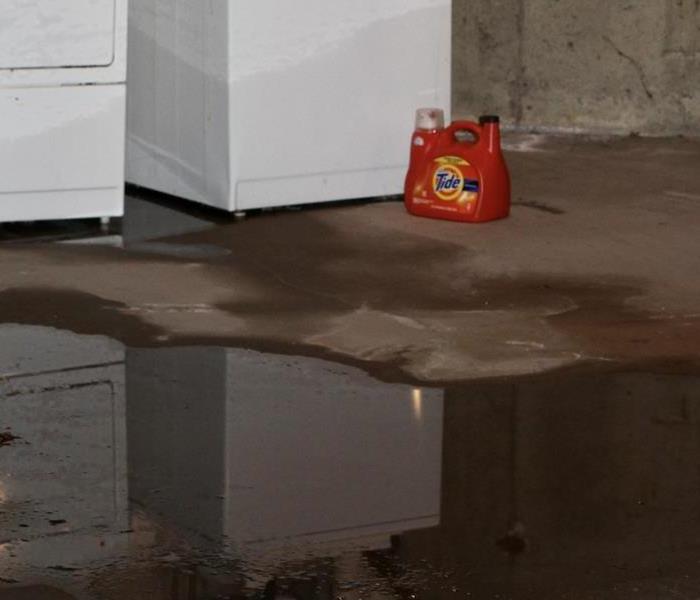 Leaky pipes cause the basement flooding.
Leaky pipes cause the basement flooding.
Are you suffering from water damage in north central Connecticut? Don’t worry SERVPRO® is here to help. From small puddles to big floods we’ve got you covered. SERVPRO's water damage restoration service cleans and restores your belongings and building materials to their original state. When it comes to flooding or water damage, speed is crucial. The sooner the damage is reduced, the more likely it is to rescue building materials, personal belongings, and avoid mold growth.
When a water damage disaster strikes, SERVPRO of Glastonbury is ready to provide 24/7 emergency water damage restoration in Connecticut!
Water Damage's Unseen Hazards
Whatever has caused your water problems - leaking pipes, a flooded basement, an overflowing dishwasher — it isn't good. Water damage is not only ugly, but it also poses a threat to your health. Mold and mildew can take root in your Bloomfield or Enfield house or company if all of the components are not fully dried. This can lead to structural damage and damage to any personal belongings.
It is critical to use SERVPRO of Glastonbury’s experienced water damage restoration services to avoid this. You'll have a hard time cleaning and drying regions such under the floors or in the walls, but we will ensure they are 100% dried and cleaned.
What to do after flooding?
You’ve been hit by water damage. Now what? Be sure to follow SERVPRO’s tips to ensure you follow the proper steps to avoid further damage.
- Remove excess water by mopping and blotting.
- Wipe excess water from wood furniture after removal of lamps and tabletop items.
- Remove and prop wet upholstery and cushions.
- Place aluminum foil or wood blocks between furniture legs and wet carpeting.
- Turn air conditioning on for maximum drying in summer.
- Remove colored rugs from wet carpeting.
- Remove art objects to a safe, dry place.
- Gather loose items from floors.
SERVPRO Water Damage Restoration Services
Give us a call at SERVPRO of Glastonbury, CT. Our water damage restoration strategies have been proved time and time again. We can bring your items back to their original state. You won't even be able to tell they've been harmed by water!
We're Here for You
The team at SERVPRO of Glastonbury/Wethersfield has the training and experience to quickly clean up and restore your home or business. Call SERVPRO of Glastonbury/Wethersfield (860-633-8791) any time.
When you have suffered a water, mold, storm, fire or biohazard disaster at your home or business, call SERVPRO of Glastonbury/Wethersfield today at 860-633-8791
Other Helpful Blog Posts
SERVPRO publishes educational articles on how to protect your home or business from disasters and how to deal with mold, fire, water, sewage, storm and other damage.
SERVPRO of Glastonbury/Wethersfield
IICRC Certified
Noemi Garcia
Franchise Owner
Call 860.633.8791
Fax 860.216.2762
24-hour emergency service
Frozen Bursting Water Pipes? Here's the scoop
1/13/2022 (Permalink)
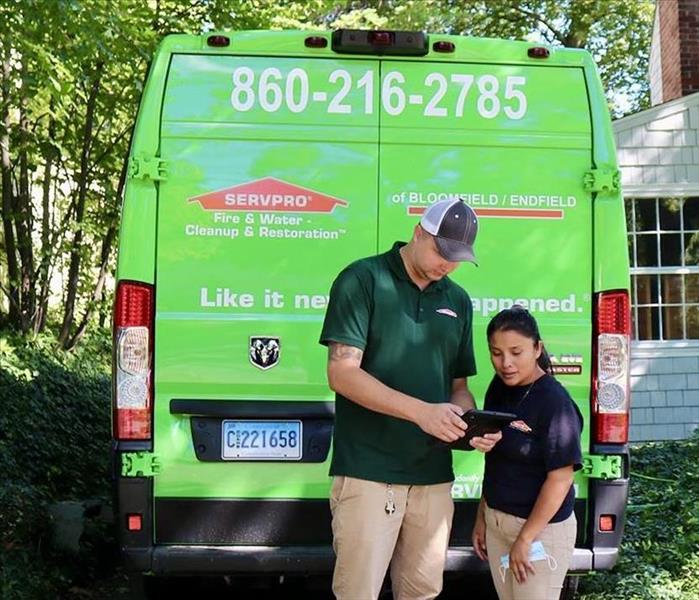 SERVPRO helping customers in need.
SERVPRO helping customers in need.
When you hear of the potentially disastrous effects bursting water pipes can have, you may wonder what causes a pipe to burst. The short answer is the expansion of hydrogen and oxygen molecules, but let’s be realistic - what you’re probably wondering is how to prevent bursting pipes and what to do in the unfortunate case that pipes do freeze and can’t hold the pressure.
Let’s start by talking about what steps can be taken on the preventive side:
Tip #1: Insulate your pipes
This is the A-#1 tip to reduce the risk of pipes freezing and bursting. When your pipes are properly insulated, you decrease the risk of bursting pipes significantly. Here are a couple of things to consider when choosing the right insulation for your pipes:
Location matters. Are you insulating indoor or outdoor pipes? The colder the area the pipes are in, the more necessary it is to insulate. Not only does this help with the bursting risk factor but there are a few bonus benefits, as well!!
R-value rating. Why does this matter? In short, the R-value refers to the amount of thermal insulation provided by the insulation product and is rated on a scale between 1 - 5. The higher the R-value rating, the more protection your pipes will have. NOTE: All pipe insulation products should have the R-value rating clearly marked on the packaging or in the product description.
Tip #2: Let your faucets drip slightly
Letting your faucets drip ever so slightly will help release pressure in pipes helping to avoid the chance of burst pipes. Keeping water moving a little makes it harder to freeze. This isn’t the most eco-friendly solution, but it has been known to help. (You can also keep a bucket under the slow dripping faucet to capture the water and use it to water plants or wash dishes!)
Tip #3: Keep your thermostat temperature consistent
Keeping the temperature at a steady level inside your home helps combat fluctuation in pipe temperature, which could factor in freezing pipes.
In closing, remember that things happen and these tips are not 100% guaranteed, but will definitely help. In the event that you do have an emergency situation, remember that SERVPRO® is certified and ready to help.
We’re Here for You
The team at SERVPRO of Bloomfield/Enfield has specialized training and experience to quickly clean up and restore your residence or commercial building and your property after suffering damage from a fire, storm, water, mold, or biohazard disaster. Call SERVPRO of Bloomfield/Enfield at 860-216-2785.
When you have suffered a disaster at your home or business, call SERVPRO of Bloomfield/Enfield at 860-216-2785
Other Helpful Blog Posts
SERVPRO publishes educational articles on how to protect your home and business from disasters and how to deal with mold, fire, water, sewage, storm, and other damage.
SERVPRO of Glastonbury/Wethersfield
IICRC Certified
Noemi Garcia
Franchise Owner
Call 860.633.8791
Fax 860.216.2762
24-hour emergency service
When you have suffered a disaster at your home or business, call SERVPRO of Bloomfield/Enfield at 860-216-2785
Check Your Glastonbury Home’s Vulnerable Plumbing to Prevent Leaks and Floods
6/16/2021 (Permalink)
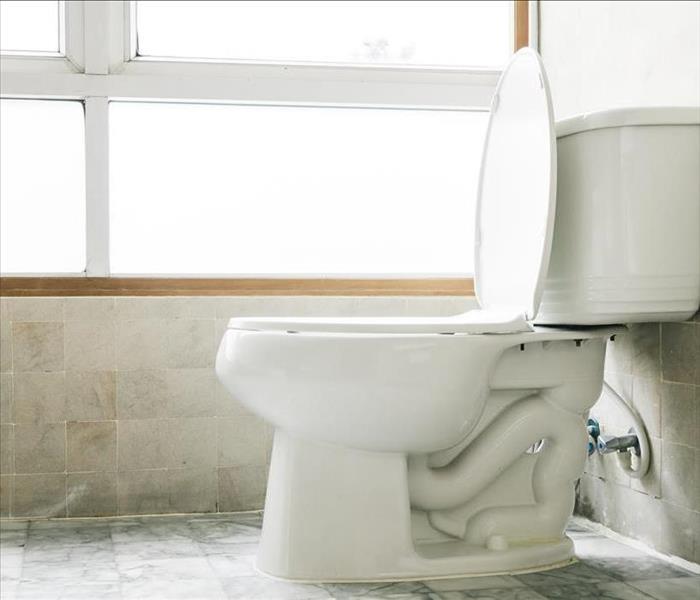 Prevent water damage in your Glastonbury home by regularly checking on your plumbing and water appliances.
(Free Stock photos by Vecteezy)
Prevent water damage in your Glastonbury home by regularly checking on your plumbing and water appliances.
(Free Stock photos by Vecteezy)
If you’ve been lucky enough to have your Glastonbury home’s plumbing systems working trouble-free for years, congratulations! But, as with anything mechanical, past success is no guarantee of future success. Things fall apart, and a sudden leak or flood from one of your water fixtures will quickly cause a lot of costly water damage.
Stay ahead of potential problems by following good practices and checking your home’s plumbing throughout the year. This way, you can head off major disasters and more easily repair or replace whatever is starting to fail now, before you must deal with major water damage restoration.
And if you do suffer a leak or flood, call the Glastonbury-area water damage remediation experts, SERVPRO of Glastonbury/Wethersfield. Our experts will arrive promptly, evaluate your situation and get to work on a plan to thoroughly dry and restore your home and possessions, treat any mold, and leave your home in before-water damage condition.
Pipes, Sewers, Drains
- Pay attention to signs of a hidden plumbing problem. These include a higher monthly water bill, pipes that make banging noises, rust stains on your water fixtures, or wetness on walls or the floor.
- If you are connected to your city’s sewer system, which many older homes are, or if your home is below street level, a backflow prevention valve can prevent sewage from flowing into your home’s sewer system.
- Keep grease out of your kitchen sink drain.
Toilets
- Twice a year, inspect your toilets. Check the fill, supply and flush valves and the supply line for leaks and other signs of wear. Turn the supply valve off and on to keep it from freezing up. If you have screw-type valves, replace them with simpler ball valves, which are easy to shut off quickly and completely.
Water Heater
- Flush sediment from your water heater tank every six months. Turn off the power, run hot water in a sink until it is cool, then attach a garden hose to the valve at the base of the heater to drain the tank. This is also a good time to check for broken valves, rust or loose or wet joints on the pipes.
- Once a year, have your water heater inspected, including the shut-off valve and all piping.
- Every other year, inspect your anode rod (or every year once the warranty expires). Replace it if needed.
Washing Machine
- Each month, take a look at the hot and cold supply lines for blisters, cracks and other signs of wear. Tighten loose connections, which usually occur at the connection where the hose bends.
- If you spot signs of wear, replace the supply hose with a reinforced steel braided hose.
- Every five years, install new reinforced steel braided hoses (and mark the date on them).
We’re Here for You
The team at SERVPRO of Glastonbury/Wethersfield has specialized training and experience in water damage remediation, fire restoration services, natural disaster prevention, chemical cleanup, and natural disaster cleanup. Call SERVPRO of Glastonbury/Wethersfield (860.633.8791) any time.
When you have suffered a water or other disaster at your home or business, call SERVPRO of Glastonbury/Wethersfield today at 860.633.8791
Other Helpful Blog Posts
SERVPRO® publishes educational articles on how to protect your home or business from disasters and how to deal with mold, fire, water, sewage, storm and other damage.
SERVPRO of Glastonbury/Wethersfield
IICRC Certified
Noemi Garcia
Franchise Owner
Call 860.633.8791
Fax 860.216.2762
24-hour emergency service
Prevent Basement Flooding in your Rocky Hill Home with a Sump Pump
5/14/2021 (Permalink)
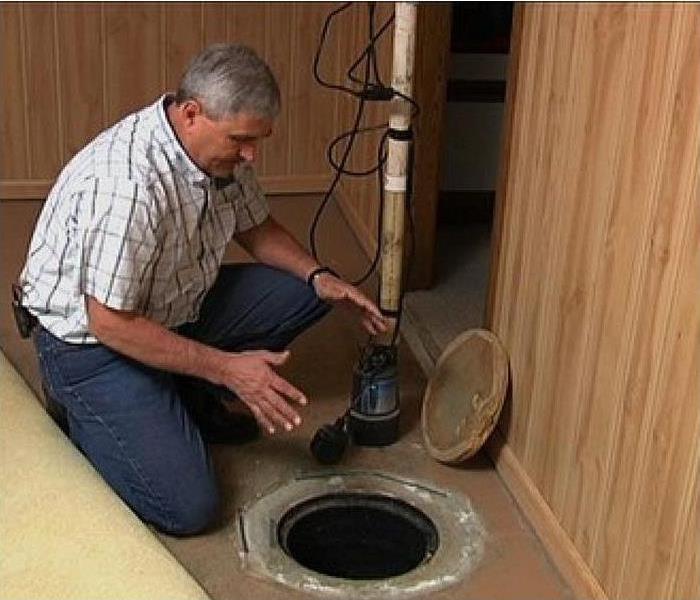 Your Rocky Hill basement is vulnerable to floods, appliance leaks and burst pipes. A well-maintained sump pump can get the water out fast!
Your Rocky Hill basement is vulnerable to floods, appliance leaks and burst pipes. A well-maintained sump pump can get the water out fast!
Even if you’ve never had any water in your Rocky Hill basement from spring flooding, or a leaking clothes washer, or a failed water heater, or a frozen and burst pipe, you may want to consider installing a sump pump. Why? Two reasons: a previously dry basement doesn’t guarantee you’ll never get water down there, and if you do get water in your basement, the damage can be substantial and costly—but pumping the water out fast helps you minimize that damage.
What is a sump pump? It’s a simple pump that sits in your basement, typically in a pit (or sump) in the floor or above the floor. When the sump pump detects water, it kicks on and pumps the water outside your home.
Choosing a Sump Pump
You’ll have a few decisions to make when purchasing a sump pump.
- Choose a submersible pump if there’s enough room in your sump pit. You can cover a submersible pump with a lid, so it’s quieter and less debris gets into the pit
- Buy a pump with a core made of cast iron, not plastic—it will last longer
- Look for a no-screen intake design with an impellor that can handle solids up to ½-inch to reduce clogging
- Opt for a mechanical switch instead of a pressure switch, and a solid float
- Bonus: choose a pump with an alarm that will tell you when the water reaches a certain level
It’s a good idea to purchase a backup pump, especially if your basement is finished. Have it installed next to the primary pump, and if pump #1 fails, the back-up pump will kick in. Another option is to install a battery-powered backup pump, so that even if you lose power, you can keep pumping water from your basement for up to 48 hours.
Maintaining Your Sump Pump
Two to four times a year, head to the basement to check and clean your sump pump.
- Start by removing the lid on the pit and cleaning out any debris
- Check the electrical connections, outlet, circuit breaker and GFCI (if you have one)
- Make sure the pump is seated upright and isn’t tilted
- Check your manual and if the pump’s bearings require lubricating, do that
- Test the pump by pouring about 5 gallons of water into the pit. The sump pump should be triggered once the water level reaches 8 to 10 inches
- Finally, check for obstructions in the outlet pipe and filter screen, if your pump has that feature
We’re Here for You
The team at SERVPRO of Glastonbury/Wethersfield has specialized training and experience in water damage remediation, fire restoration services, natural disaster prevention, chemical cleanup, and natural disaster cleanup. Call SERVPRO of Glastonbury/Wethersfield (860.633.8791) any time.
When you have suffered a water or other disaster at your home or business, call SERVPRO of Glastonbury/Wethersfield today at 860.633.8791
Other Helpful Blog Posts
SERVPRO® publishes educational articles on how to protect your home or business from disasters and how to deal with mold, fire, water, sewage, storm and other damage.
SERVPRO of Glastonbury/Wethersfield
IICRC Certified
Noemi Garcia
Franchise Owner
Call 860.633.8791
Fax 860.216.2762
24-hour emergency service
Old or Damaged Washer Hoses Can Flood Your Home
5/12/2021 (Permalink)
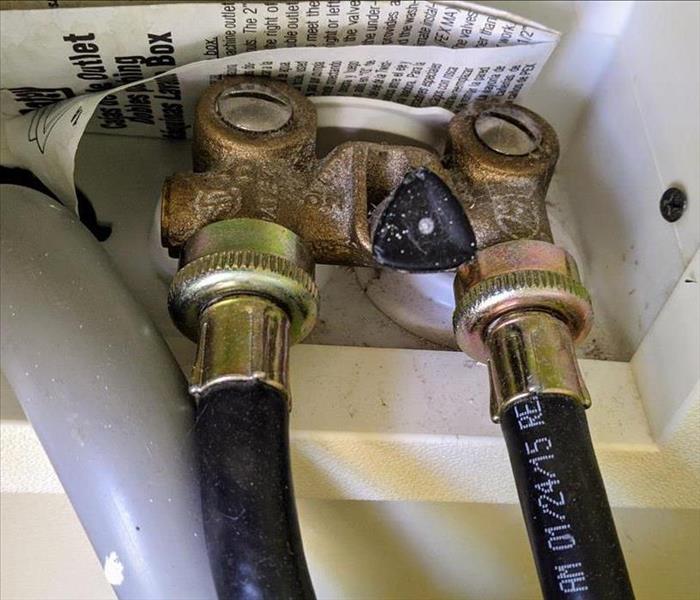 Avoid a leaking or burst washing machine hose—and the water damage that follows—by purchasing good quality hoses and checking them regularly.
Avoid a leaking or burst washing machine hose—and the water damage that follows—by purchasing good quality hoses and checking them regularly.
A surprisingly simple component of your plumbing for your washing machine—the washer hose—is among the greatest culprits when it comes to leaks, floods and the resulting water damage. You probably don’t think about your washer hoses very often, especially when they are functioning smoothly without any problems. But you really should, because when they go bad, you have real problems on your hands—a messy and expensive cleanup of sudden water damage—and it’s so easy to prevent those problems.
Why Does a Washer Hose Leak or Burst?
The three main causes of a leaking or burst hose are:
- Poor installation: the hose was not attached properly
- Defective hose: as with any manufactured product, some hoses are sold with flaws
- Old age: if a washer hose is more than 5 years old, replace it, because eventually the hose will grow brittle and weaken
How to Prevent Water Damage from a Leaking or Burst Washer Hose
Washer hose safety starts with the quality of the hose itself. When you are buying new hoses or replacing old ones, choose the best hoses. And when you buy a new hose, write the date you installed it on a tag or on the hose itself, so you can replace it after 5 years.
- Rubber or stainless steel: hands down, buy hoses that are flexible plastic sheathed with stainless steel mesh. While no hose is burst-proof, these hoses are more durable than rubber ones and can better withstand twisting, cutting or compressing. Spend a little more upfront and you’ll have a superior hose that will last longer
- Length of hose: because you’ll need to move your washer out to install and check your hoses, don’t buy anything shorter than 5 feet (60 inches)
Once you have quality hoses installed on your washer, remember to check them a couple of times a year. This should only take you a few minutes, but it will pay off in avoiding a burst or leaking hose. Here’s what to look for:
- Signs of moisture: this is an indication of impending trouble. You may need to tighten the connections or you may need to replace the hoses
- Signs of wear: if you see cracks, bulges or kinks in a hose, don’t delay—it’s time to replace it
- Loose connections: check the connections at both ends of the hoses and tighten if necessary
Adopt This One Good Habit
Finally, a simple way to prevent most leaks from your washing machine hoses is to turn off the water supply when the machine is not in use—and especially when you’re leaving your home for a vacation.
We’re Here for You
The team at SERVPRO of Glastonbury/Wethersfield has specialized training and experience in water damage remediation, fire restoration services, natural disaster prevention, chemical cleanup, and natural disaster cleanup. Call SERVPRO of Glastonbury/Wethersfield (860.633.8791) any time.
When you have suffered a water or other disaster at your home or business, call SERVPRO of Glastonbury/Wethersfield today at 860.633.8791
Other Helpful Blog Posts
SERVPRO® publishes educational articles on how to protect your home or business from disasters and how to deal with mold, fire, water, sewage, storm and other damage.
SERVPRO of Glastonbury/Wethersfield
IICRC Certified
Noemi Garcia
Franchise Owner
Call 860.633.8791
Fax 860.216.2762
24-hour emergency service
Flooded Basement Cleanup in Portland
4/30/2021 (Permalink)
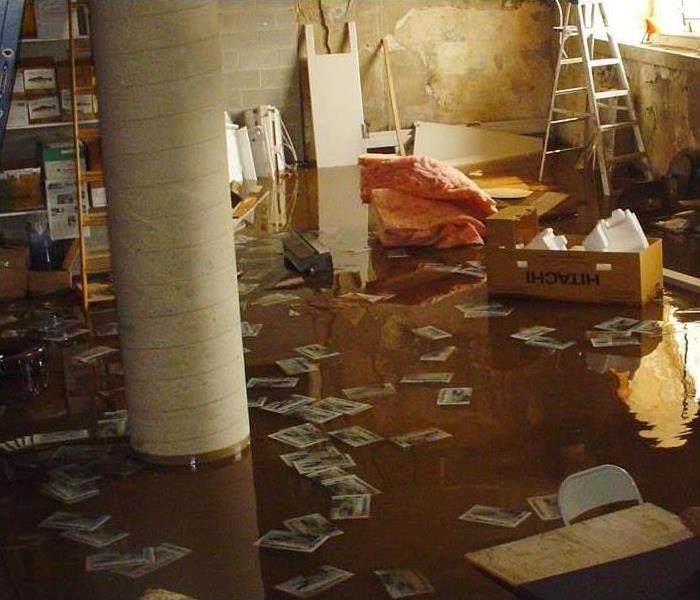 So many basements flood in the spring! If it happens to your Portland home, call SERVPRO for complete water and mold damage remediation services.
So many basements flood in the spring! If it happens to your Portland home, call SERVPRO for complete water and mold damage remediation services.
Forget the flowers: spring showers bring flooded basements! All it takes is one heavy rainstorm—or maybe an average rain that goes on for multiple days, or perhaps a series of storms. Whatever way it happens, too much water to be absorbed into the ground means it may find its way into your basement. And when it gets there, the property and structural damage can be overwhelming. You may even end up with a persistent mold infestation.
Minimize Basement Flooding and Water Damage Cleanup
Luckily, there are ways to prevent or minimize basement flooding, and ways to reduce basement water damage. Preventing a flood starts with making it difficult for water to get inside, and that starts with proper drainage.
Route Water Away from Your Home’s Foundation
Grading your property is key to preventing springtime basement flooding. Your yard should slope away from your home’s foundation on all four sides so that water doesn’t pool near your house. Take a look at your property after a rainstorm. Is water ponding next to your foundation? If yes, have your yard graded or do it yourself.
Next, focus on your home’s drainage system: your gutters and downspouts. If water spills over the edges of your gutters instead of flowing into the downspout, you’ll need to have the slope of the gutters adjusted. Clear your gutters of debris such as leaves to allow rainwater to flow freely. Once you have water flowing to your downspouts, make sure they direct the water away from your foundation. Place concrete or plastic splash blocks beneath the end of your downspouts to move water away from your foundation and out into the yard. Consider using flexible or rigid downspout extenders to move water even further away from your foundation.
If your home has any basement windows that are partially below grade, install window well covers to protect them from rainwater.
Keep Flooding Damage to a Minimum
If water does enter your basement, the best way to prevent a lot of damage is to quickly discover about the water and pump it back out.
You can detect water entering your basement by placing one or more water sensors at different locations on the floor. Depending on capabilities, the sensors will sound an alarm and/or send an alert to your cell phone—giving you a head start on addressing the problem.
A sump pump installed in your basement will help keep water damage to a minimum, although you’ll still need to dry and clean up your basement. As water reaches the sump, or pit, in which the pump sits, it will trigger the pump to eject the water outside. Be sure to check, clean and maintain your pump so that it’s ready to go when you need it. A battery back-up will keep the pump running in case of power loss.
Also, if you have a floor drain, make sure it is not covered and is clear of debris.
What to Do if Your Portland Basement Floods
If you do get water in your basement, you may be able to minimize the damage and handle the cleanup yourself. If you have several inches or more of water in your basement, however, cleanup and water damage restoration may be better handled by an experienced professional, like SERVPRO of Glastonbury/Wethersfield. We know how to restore water-damaged possessions, appliances, furniture, flooring and more.
Be Safe When Evaluating Your Flooded Basement
Because a flooded basement can be dangerous, take some precautions before venturing to check and clean up the damage.
- Start by turning off the electricity and gas to your basement, if you can do so safely. Or call a plumber and electrician—or SERVPRO of Glastonbury/Wethersfield—to do the job.
- A flooded basement presents slip-and-fall hazards as well as puncture risks, so protect your feet with sturdy rubber boots and your hands with thick rubber gloves.
- Water-soaked furniture, boxes, etc. will be surprisingly heavy to lift, so avoid injuring yourself by lifting lighter loads and using your legs rather than your back to lift.
- Another danger is that of a water-soaked ceiling. A wet ceiling may pose the risk of electrocution, so don’t turn on ceiling fans or light fixtures if you see water damage. Worse, if you notice your basement ceiling is sagging, stay out of the basement, since it could collapse on top of you.
Removing the Water
Once you can safely enter your basement, first try to find out where the water is coming from. Typically, it’s going to be a crack in the floor or foundation or around a window frame. If water is still entering your basement, use towels or rags to plug the leaks.
Check your floor drain if you have one and unclog it if necessary to allow the water to drain. Also keep an eye on your sump pump and clear out anything that may be blocking the float.
Now, begin removing the standing water. A wet vac is ideal to pull up water quickly, but towels, buckets and mops are also an option.
Drying Out Your Basement
Once you have removed the standing water, your next task is to remove all the water-affected or -damaged objects from the basement. Remember, anything that’s water-logged will be much heavier than you would expect, so be careful when lifting.
Your goal at this point is to completely dry out your basement within 48 hours. After that, mold colonies can start to grow. Unfortunately, you may not even see mold, because it can be behind walls and under floors, creating a stubborn mold problem that can affect your health.
Chances are high that if you have carpeting or other flooring installed in your basement, you’ll have to pull it up and trash it.
The best way to dry out all the moisture in your basement by yourself is to get the air moving. Throw open all the windows and doors. Run lots of fans to suck in fresh air and push out stale basement air. Run dehumidifiers to reduce humidity and speed up drying. You can even run air conditioners to drive down humidity, too.
Drying Your Possessions
All those objects that you removed from your basement must be dried out within that same 48 hours to prevent mold and mildew growth. This can be challenging, especially if the storm that brought the rain is still ongoing. If the storm has passed, you’ll be able to remove your wet items from the basement and dry them outside in the sunshine. If that’s not possible, take out as much as you can and, as in the basement, set up fans and dehumidifiers to move air and remove moisture.
Here are some tips to help you tackle the drying of your furniture and possessions:
- Take objects out of cardboard boxes, discard the boxes and dry the items separately
- Pick up wet books and magazines off the floor to dry
- Hang up fabric, fur and leather
- Remove and prop up cushions and upholstery
- Place aluminum foil or wood blocks between furniture and carpeting to prevent stains
If you have any electrical appliances—such as TVs, tablets or computers—in the basement, they, too, may have been affected by the floodwater. It’s important that you do not turn them on—if there’s any moisture inside, they can shock you. Have all electronics checked and tested by an electrician before you use them.
Complete Basement Flood Cleanup by SERVPRO of Glastonbury/Wethersfield
The do-it-yourself water-removal and drying-out processes described above are labor- and time-intensive—and offer no guarantee that all the water will be removed, all your possessions will be dried and cleaned, and no mold colonies will take over your basement.
On the other hand, with one call to SERVPRO of Glastonbury/Wethersfield, you’ll reach the Portland-area experts in flooded basement water damage cleanup. Our proven water damage cleanup procedures have made flood recovery easier for so many homeowners in central Connecticut.
Our crew has the skill, procedures, products and tools to return your basement to before-flood condition. We’ll remove all the water and moisture quickly and thoroughly, which will speed your recovery from the flood. Quicker drying means less chance of a mold infestation.
We even make the insurance claims process easier and faster by coordinating with your insurer. Our digital inventory of your water-damaged furnishings and items (including photos) means your insurer has the most accurate information.
Once you call us with your flooded basement water emergency, we send our experienced crew to your Portland home ASAP, where they evaluate and begin containing the damage. The tested SERVPRO® water damage remediation process means your home and property are restored quickly and completely.
- Inspection/assessment: We evaluate the water damage in your basement and measure the moisture. With that information, we create a plan to dry and restore your home and property.
- Temporary protection: If there is a risk of further damage, we cover or board up vulnerable parts of your home.
- Water removal/extraction: Our powerful pumps and vacuum units quickly remove hundreds of gallons of water.
- Drying/dehumidifying: With most of the water removed, it’s time to bring in air movers and dehumidifiers to finish the drying process.
- Cleaning/sanitizing: We bring your water-damaged furnishings and possessions to our central Connecticut warehouse, where they are cleaned, sanitized and deodorized. On-site, your basement receives the same treatment.
- Restoration: If areas of your home require repairs or reconstruction, we take care of that before returning your cleaned furnishings and possessions.
If Your Possessions and Furnishings are Water Damaged
SERVPRO tries its best to restore damage rather than calling items a loss, which means you’ll have to replace them. Our expertise and advanced methods can help you save money while preserving irreplaceable possessions.
We use our Contents Claim Inventory Service (CCIS) to provide you with a digitized and bar-coded inventory of your damaged items. In addition to speeding your insurance claim, CCIS allows us to track your possessions while they are being restored in our warehouse.
Once we determine which of your possessions can be restored, we use the appropriate techniques:
- Dry cleaning: for light residues; can also be used to pre-clean before wet cleaning
- Wet cleaning: best for moderate to heavy residues
- Spray and wipe: for items too delicate to be wet cleaned
- Foam cleaning: for fabrics that might shrink or bleed if wet cleaned
- Abrasive cleaning: for more stubborn residues
- Immersion cleaning: for items that can be submersed in the cleaning product
Electronics: Our electronics techs evaluate and clean electronic items—such as TVs, DVD players, tablets and computers—then open up, clean and inspect the devices.
Documents: If you stored important documents—such as legal or medical records, books, letters and photos—in your basement, they may have been damaged in the flood. SERVPRO knows how to restore many of these items and can digitize them, too, so that they will not be at risk in the future.
If You Have Mold Damage
SERVPRO of Glastonbury/Wethersfield can inspect your Portland home and property to determine if mold damage has occurred. We use advanced methods and sophisticated products and equipment to combat mold:
- Containment: We use negative air chambers with negative air pressure to halt the spread of mold spores
- Air filtration: Using air scrubbers and HEPA vacuums, we remove mold spores from the air
- Removal: Mold-infested materials, such as drywall and carpeting, are removed and disposed
- Cleaning: We clean and disinfect your damaged but restorable possessions, then deodorize them with foggers for deep penetration. We also treat your undamaged possessions with antifungal and antimicrobial treatments to prevent new mold colonies from forming
We’re Here for You
The team at SERVPRO of Glastonbury/Wethersfield has specialized training and experience in water damage remediation, fire restoration services, natural disaster prevention, chemical cleanup, and natural disaster cleanup. Call SERVPRO of Glastonbury/Wethersfield (860.633.8791) any time.
When you have suffered a water or other disaster at your home or business, call SERVPRO of Glastonbury/Wethersfield today at 860.633.8791
Other Helpful Blog Posts
SERVPRO publishes educational articles on how to protect your home or business from disasters and how to deal with mold, fire, water, sewage, storm and other damage.
SERVPRO of Glastonbury/Wethersfield
IICRC Certified
Noemi Garcia
Franchise Owner
Call 860.633.8791
Fax 860.216.2762
24-hour emergency service
Frozen and Burst Pipe Cleanup in Glastonbury, CT
3/3/2021 (Permalink)
 If you have a frozen and burst pipe in your Glastonbury home, act fast to stop the water damage and call SERVPRO for complete water damage cleanup.
If you have a frozen and burst pipe in your Glastonbury home, act fast to stop the water damage and call SERVPRO for complete water damage cleanup.
The harsh weather of February 2021 proved that even deep in the heart of Texas, almost any home in America can suffer frozen and burst pipes. We in Glastonbury, CT, are more than familiar with the vast water damage that a frozen and burst pipe can cause.
In fact, because our typical winter includes many below-freezing days and nights, we in central Connecticut live in homes that are constructed to withstand that kind of cold. That includes pipes that are relatively well insulated, which means they are less likely to freeze and burst. In the southern states, however, homes and pipes are not usually well insulated. That’s one of the reasons why the recent rare freeze caused so many cases of frozen and burst pipe water damage in Texas and throughout the south. So, Glastonbury homeowners, you may complain about the cold, but you, your home and your pipes are better equipped to handle it!
Still, pipes do freeze in Connecticut, even in March—and the damage can be even worse if you’re not at home to deal with it promptly. We’ve all heard horror stories of homeowners who return from a vacation to discover destroyed walls, floors, ceilings, furniture and possessions from a frozen and burst pipe that thawed out and spewed water. That kind of uncontrolled damage can require repairs, reconstruction and cleaning that costs tens of thousands of dollars.
The experts at SERVPRO of Glastonbury/Wethersfield are prepared to respond to your frozen and burst pipe with the know-how, equipment and experience to help you recover quickly and completely from mild or severe water damage. We will handle every aspect of the cleanup from halting the water damage to restoring your structure, furnishings and possessions—to before-event condition.
The Science of Frozen and Burst Pipes
Because we understand why pipes freeze, SERVPRO® can help you prevent burst pipe water damage. Read on for the story of how and why pipes freeze—and steps you can take to prevent that from happening and ways to avoid damage if you do experience a frozen and burst pipe.
It’s not rocket science that pipes—carrying water as they do—can freeze. And when the outside temperature drops to below-freezing for several days or even a single day, pipes in the home become vulnerable to freezing up, especially if they are located in unheated parts of your house, and are uninsulated or not well insulated. Particularly vulnerable are pipes located in:
- exterior walls at the foundation of your home
- cracked or damaged foundation areas
- foundation entry points for cables and plumbing
- basements or crawlspaces
- attics
- garages
- sinks that sit against exterior walls
- outside hose spigots
Most pipes that freeze and burst are traditional copper pipes. PEX piping, on the other hand, may freeze, but is much less likely to burst (unless you have a PEX-aluminum-PEX combination piping).
While the ice blockage is the root cause of a burst pipe, surprisingly, it’s not the ice itself that does the bursting. Pressure is to blame. The water begins freezing and forming ice inside the pipe, slowing then stopping the flow of water until the pipe is plugged. Intra-pipe water pressure can grow to be greater than 1,000 times the usual amount, or up to 2,000 psi.
That’s why the actual spot of the burst is not usually where the frozen blockage is, but somewhere downstream between the blockage and a faucet or fixture—that’s the water has nowhere to go. And what happens when the ice blockage starts to thaw out? As water starts to flow again, out it comes at the new hole in the pipe, at the rate of up to many hundred gallons of water per hour.
So, when the temperature has dropped and your pipes are at risk of freezing and bursting, what can you do to prevent a water damage disaster in your home? Plenty—and it starts with determining if you have a frozen pipe. Start by doing some detective work.
How Do You Know You Have a Frozen Pipe?
Naturally, finding pools of water on the floor tells you that a frozen pipe has already burst. If there are no puddles, some other clues can tell you that you may have a frozen pipe behind a wall or ceiling.
- How is water flowing to and from your sinks and fixtures? Is the water pressure in the sink or shower suddenly reduced? Is the water from your faucet discolored—or is no water coming out at all? After you flush the toilet, does it fail to refill?
- Do you hear dripping, bubbling or whistling sounds behind walls or within pipes? Can you smell different or unpleasant smells from drains? Do you see water stains or discoloration on a wall or ceiling?
If it’s a “yes” to any of these questions, start hunting for the frozen pipe. Focus your search on unheated areas of your home.
Turn on all your faucets one by one. If no water flows from any of them, you’ll know that the freeze is probably close to where the water supply enters your house. If one or more faucet doesn’t work, check for a frozen pipe between the main water line and the non-working fixtures.
Take a look at the pipe—you’re checking for condensation or frost, and if you see that, there’s your freeze. Don’t see any frost? Then run your fingers along the pipe to feel for a spot that’s noticeably colder than the rest.
Prevent a Leak
If the pipe is still frozen, you have a chance at preventing water damage from occurring. Start by shutting off the water at the main valve. (For metered (or “city”) water, look on one side of your water meter for the valve, typically on a basement wall. For well water, check the pressure tank for the shutoff valve.) Then, open up all the faucets to relieve pressure in the pipes.
If the freeze is in an exposed pipe, you can get to work thawing it, starting at the non-working faucet and moving back toward the blockage. Apply gentle heat with a hair dryer, heat lamp, portable heater, electric heat tape, electric heating pad—even towels soaked in hot water.
On the other hand, if the freeze is behind a wall, you can turn up the thermostat or aim an infrared lamp at the wall. Or, knowing you can patch it later, go ahead and cut an opening in the wall to let warm air circulate directly around the blockage.
When you’ve thawed the frozen pipe, you’ll have to check for leaks. Naturally, if you see or hear water running or dripping, you’ll know there’s a leak!
First, turn on the water at the main valve. Look and listen for running, dripping or pooling water, in which case, you should turn the valve back off. If there are no obvious signs of a big leak, check carefully for a smaller or pinhole leak by examining the previously frozen pipe. Check the pipe’s seams and joints both visually and by using your fingers to check for wetness. If you still don’t have a sign of a leak, try one more test. Turn on each of your faucets and observe the water pressure. Low pressure might mean you have a small leak in that pipe.
Deal With a Leak A.S.A.P.
You’ve determined that you have a leak, so here’s where you spring into action to prevent or at least minimize water damage. The idea is to seal the leak temporarily until a plumber or water damage restoration specialist can replace the damaged section entirely.
(Note: if you have standing water on the floor, you may want to quickly take two actions for safety. Turning off the electricity to your home will prevent a possible electrocution, and quickly mopping up the standing water will reduce the chances of falling—and can help avoid additional water damage.)
For large or medium leaks, the best option requires that you own a correctly sized circular sleeve clamp lined with rubber. If you don’t have that on hand, try rigging one by slitting a length of an old heater or radiator hose and sliding that over the leaky area. Hold it in place with a C-clamp, protecting the pipe with small blocks of wood to prevent further damage to the pipe.
For a small or pinhole leak, you can make a temporary patch by wrapping sturdy duct tape around the pipe.
Next up: get a professional water damage remediation company to your Glastonbury-area home to replace the pipe and clean up the damage to your home, furnishings and possessions.
How SERVPRO Cleans Up Water Damage from Frozen and Burst Pipes in Glastonbury, CT
It’s essential to get your frozen and burst pipe water damage cleanup started A.S.A.P. The longer water sits, the more it damages your house and possessions. It can soak into your home’s floors, walls and ceilings, increasing the chances that they’ll have to be replaced. Water and moisture can—in just 48 hours—allow mold colonies to begin growing, which leads to the need for even more cleanup. And, after the cold temperatures that caused your pipe to freeze and burst, it’s highly likely that many other homeowners in the Glastonbury area are picking up their phones to call water damage cleanup professionals, too!
Don’t wait: this is the time to call SERVPRO of Glastonbury/Wethersfield. We have years of experience, high-level training and the most up-to-date equipment and products. Our goal is to restore your home to its pre-damage condition as soon as possible.
SERVPRO of Glastonbury/Wethersfield recommends that you file your insurance claim for the frozen and burst pipe damage as soon as possible. We will work closely with your insurer to accelerate the claims process. We even provide you with an inventory of water-damaged furnishings and items, including photos. Additionally, we may recommend that you temporarily leave your home while the loud and messy cleanup process is underway.
Our skilled crew will get to your home fast, evaluate the situation, and get right to work restoring your home, furnishings and property following the proven SERVPRO water damage remediation process.
Inspection/assessment: We inspect the damaged areas of your home and test to determine how much moisture is there. Then we outline a plan to complete dry out and restore your home and property.
Temporary protection: If needed, we use tarps and boards to prevent further water damage.
Water removal/extraction: With the damage halted, we use our powerful pumps and vacuum units to quickly pull out hundreds of gallons of water, helping to prevent more water damage and mold growth.
Drying/dehumidifying: With the bulk of the water removed, we measure temperature and relative humidity to direct how we place the air movers and dehumidifiers that will finish the drying process.
Cleaning/sanitizing: Next, we sanitize and remove odors from your dried and dehumidified home. Any furnishings and personal items that were damaged are cleaned, sanitized and deodorized in our central Connecticut warehouse.
Restoration: Finally, we make repairs or even reconstruct areas of your home, then return your cleaned possessions and furniture.
We’re Here for You
The team at SERVPRO of Glastonbury/Wethersfield has specialized training and experience in water damage remediation, fire restoration services, natural disaster prevention, chemical cleanup, and natural disaster cleanup. Call SERVPRO of Glastonbury/Wethersfield (860.633.8791) any time.
When you have suffered a water or other disaster at your home or business, call SERVPRO of Glastonbury/Wethersfield today at 860.633.8791
Other Helpful Blog Posts
SERVPRO publishes educational articles on how to protect your home or business from disasters and how to deal with mold, fire, water, sewage, storm and other damage.
SERVPRO of Glastonbury/Wethersfield
IICRC Certified
Noemi Garcia
Franchise Owner
Call 860.633.8791
Fax 860.216.2762
24-hour emergency service
Emergency Basement Flood Cleanup in Wethersfield CT
2/17/2021 (Permalink)
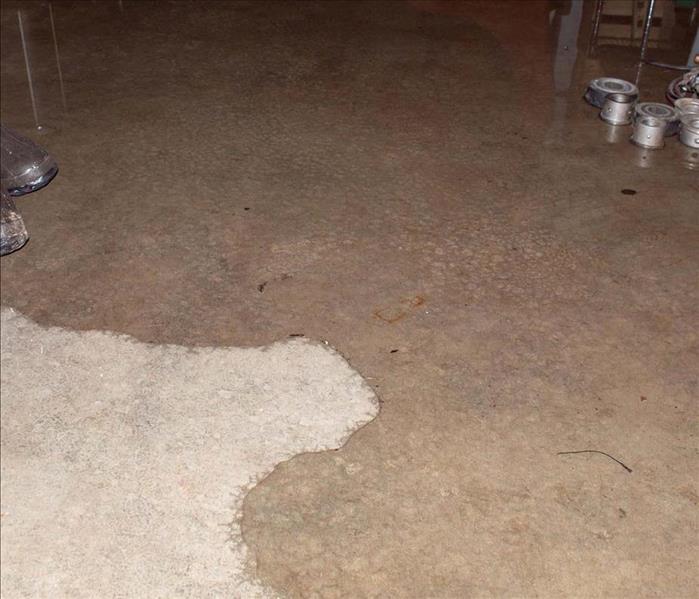 Emergency basement flood cleanup in Wethersfield CT
Emergency basement flood cleanup in Wethersfield CT
Emergency basement flood cleanup in Wethersfield CT homes is usually an overwhelming task. When floodwater enters your home, it saturates everything. The water recedes eventually, but it leaves mud, debris, and odors behind. Floodwaters often contain sewage, bacteria, and harmful contaminants that make your family sick. If you wait too long to perform emergency flood cleanup, mold and mildew begin growing as well.
At SERVPRO®, we provide the basement flood cleanup services you need. We bring the equipment and the professionals to do the job right. We respond 24/7 to get rid of the mud and the mess so you can get back to your normal routine.
SERVPRO Emergency Basement Flood Cleanup
When SERVPRO professionals perform emergency basement flood cleanup, we understand that timing is critical. Drying your home and property is the key to minimizing your financial loss, so we take each task seriously. Highly trained professionals respond when you call. We arrive with industrial-grade extraction, deodorizing, cleaning, dehumidifying, and drying equipment so we can do the job right. We begin by assessing the damage and determining your needs.
Flooded House Clean Up Assessment
When water floods a neighborhood, each home’s clean up needs are unique. That’s why we begin each emergency basement flood cleanup in Wethersfield CT with a walkthrough and inspection. We sometimes identify areas that require black water cleanup and other specialty processes. We look for signs that indicate floodwaters soaked into your flooring or seeped behind your walls. Once we locate all of the affected areas, we work to return your home to its pre-flood condition.
Separating Undamaged Property
We begin emergency basement flood cleanup in Wethersfield CT homes by separating damaged and undamaged property. Water doesn’t usually destroy everything. If you allow floodwater-soaked items to share the same space with undamaged property, you end up losing everything. We prevent this from happening by quickly removing salvageable property and restoring it as necessary.
Water Extraction
After floodwaters recede, there’s always water left behind. We begin the dry-out process by removing the water with industrial-grade extractors. This often involves wet carpet clean up and water removal from wet fabrics, upholstery, and other porous surfaces. Because floodwaters often contain damaging soil and sewage, we realize that we can’t always save everything.
Drying
We use our drying equipment to remove any moisture that remains after we complete water extraction. When porous surfaces remain moist, mold and mildew growth. They release a distinct odor that drifts beyond your flooded basement to other parts of your home. Airborne mold, mildew, and other post-flood contaminants often irritate sensitive lungs and cause medical difficulties. We reduce the potential for harm by thoroughly drying all surfaces.
Dehumidification
Dehumidification is a key element of emergency basement flood cleanup in Wethersfield CT homes. When floodwaters take over your basement, moisture lingers in the air. It eventually settles into porous surfaces and encourages mold, mildew, and fabric rot. We remove the moisture with our comprehensive dehumidification process.
To perform this final water removal step, we figure out room dimensions, relative humidity, and temperature. Our calculations help us determine the number of industrial dehumidifiers we need. It also helps us place the dehumidifiers in the best locations for optimum performance.
Odor Removal
When floodwater recedes, your home often retains a mix of odors. When dirty water, mold, mildew, sewage, and other scents combine, the smell is often unbearable. Until we remove the odor, it lingers in the air and settles into your upholstery and other porous surfaces. We remove these residual odors with industrial scrubbers, foggers, and odor-neutralizing solutions.
Repair and Restoration
Restoration and repair are the final steps of emergency basement flood cleanup in Wethersfield CT. The SERVPRO team completes the projects we identified during our walkthrough. We may replace drywall, restore flooring, replace furniture, repaint your walls, or perform other tasks. We also salvage, repair, or replace your furniture and decor.
Commercial Building Restoration
At SERVPRO, we also do emergency basement flood cleanup in Wethersfield CT commercial properties. We have the manpower, equipment, expertise, and technology. We can complete any flood cleanup, repair, and restoration job no matter the size. Our team responds to your emergency call 24/7. We work fast to minimize the disruption to your business.
Contact SERVPRO
We are a locally owned and operated SERVPRO franchise. We have an A+ Rating with the Better Business Bureau. We’re committed to emergency basement flood cleanup in Wethersfield CT homes and businesses. When you call us, we respond immediately. We provide professional services for a low water cleanup cost.
For more information about emergency basement flood cleanup in Wethersfield CT, give us a call at (860) 633-8791.
Leaking Waterline Cleanup in Rocky Hill, CT
1/16/2021 (Permalink)
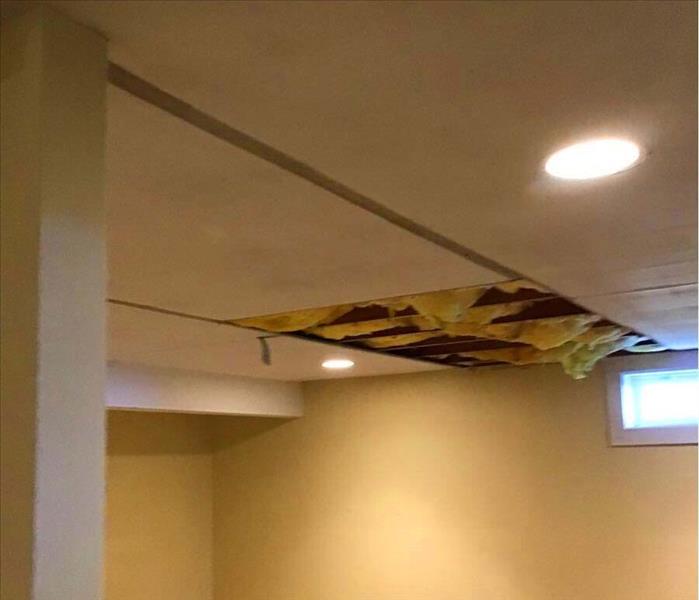 Leaking Waterline Cleanup in Rocky Hill, CT
Leaking Waterline Cleanup in Rocky Hill, CT
When you need professionals to handle your Leaking Waterline Cleanup in Rocky Hill, CT, SERVPRO® is available 24/7. A pipe leak usually happens suddenly, causing water to leak throughout your home. A water emergency can occur because of an appliance leak, frozen pipe repair, or a busted copper pipe. No matter what causes your water overflow problem, it would be best if you had immediate cleanup and restoration to keep the damage from taking over your home.
SERVPRO responds quickly to your leaking waterline cleanup in Rocky Hill, CT. When we knock on your door, we come prepared to get the job done. Our team uses industrial-grade extraction, dehumidifying, deodorizing, and drying equipment to do it right. We remove the water and do everything possible to prevent further damage.
SERVPRO Busted Pipe Damage Cleanup
SERVPRO responds immediately to leaking waterline cleanup in Rocky Hill, CT homes. We know that it’s essential to remove the water quickly to minimize the damage. Without proper cleanup, water soaks deeply into your upholstery, draperies, furniture, flooring, and other porous surfaces. Timely cleanup is the only way to minimize continuous water damage and deterioration.
Inspection and Water Damage Assessment
Before we begin leaking waterline cleanup in Rocky Hill, CT homes, we do a quick walkthrough to assess your needs. We document visible damage and also look for hidden damage.
Hidden damage sometimes occurs when water from a broken water pipe seeps into narrow openings, closets, storage areas, and wall interiors. Once we locate areas of damage, we establish a game plan for extraction, drying, dehumidification, odor removal, cleaning, and sanitizing. We also determine areas that will require restoration and repair.
Water Extraction
We sort and separate your property to perform a more efficient leaking waterline cleanup in Rocky Hill, CT homes. We quickly sort and separate damaged and undamaged items. This process prevents water-soaked and water-damaged items from contaminating other dry property.
When wet and dry property remains in the same area, wet items often damage salvageable items. After we remove undamaged property from the water-soaked site, we use an industrial extractor to remove the water from saturated surfaces.
Drying
When water soaks into porous items, it takes a multi-faceted effort to perform efficient leaking waterline cleanup in Rocky Hill, CT homes. Surfaces usually remain damp after extraction. That can be a problem because moist, porous surfaces provide an ideal growth medium for mold and mildew growth.
After our SERVPRO team extracts the water, we continue our drying equipment efforts. This step eliminates residual moisture from furniture, rugs, drapes, wall and closet interiors, and other damp areas and surfaces.
Dehumidification
When we’ve completed the extraction and drying processes of our leaking waterline cleanup in Rocky Hill, CT homes, we dehumidify the affected areas. This step removes the moisture that often lingers in the air. Unless we thoroughly dehumidify water-soaked spaces, airborne humidity finds its way back into fabrics, flooring, carpets, and other porous surfaces. It’s enough moisture to damage materials and allow mold and mildew to grow.
SERVPRO specialists calculate the area, the relative humidity, and temperature in each room. The information helps us determine the number of industrial dehumidifiers we need and where we should place them.
Odor Removal
Deodorization is another essential service we perform during leaking waterline cleanup in Rocky Hill, CT homes. This process removes odors that form in water-soaked areas. Without treatment, the odor settles into porous surfaces in your home. Our team eliminates them using industrial scrubbers, foggers, and odor-neutralizing products.
Cleaning and Sanitizing
As we conclude our leaking waterline cleanup in Rocky Hill, CT homes, we thoroughly clean and sanitize the affected areas. We use specialized equipment and safe, professional solutions.
Repair and Restoration
Restoration and repair are the final steps for leaking waterline cleanup in Rocky Hill, CT homes. The SERVPRO team repairs and restores structural and cosmetic areas that sustained water damage. We complete wall reconstruction, drywall replacement, painting, and other repair and restoration tasks. We salvage, repair, or replace personal property and decor.
Commercial Building Restoration
SERVPRO also conducts leaking waterline cleanup in Rocky Hill, CT commercial properties. Experienced SERVPRO professionals do the work. Also, we enhance our performance and efficiency with the latest technology and industrial equipment. Our team can perform any size cleaning and restoration job in any commercial facility.
Contact SERVPRO
We are a locally owned and operated SERVPRO franchise, and we’re committed to leaking waterline cleanup in Rocky Hill, CT homes and businesses. When you call us, we respond immediately to perform water line leak cleanup, ice damage repair, water damage cleanup due to leaking pipes, and other water problems.
For more information about Leaking Waterline Cleanup in Rocky Hill, CT, give us a call at (860) 649-0836.
Water Damage Cleanup in Portland CT
12/28/2020 (Permalink)
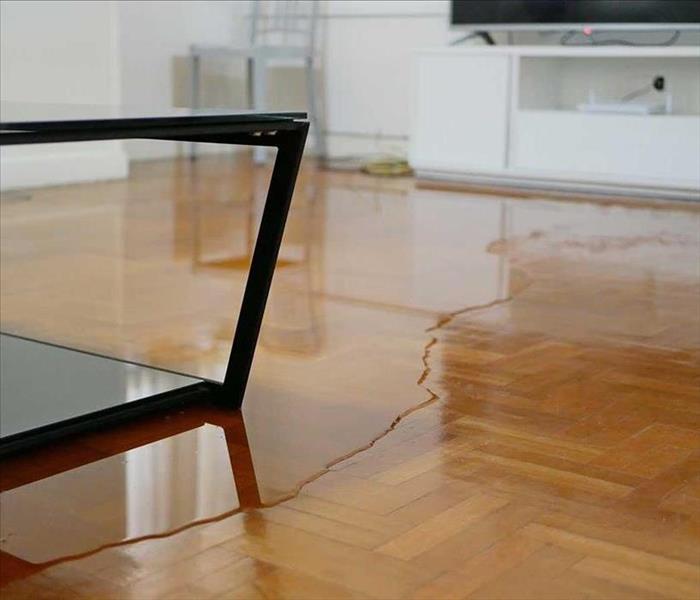 Water Damage Cleanup Professionals in Portland CT
Water Damage Cleanup Professionals in Portland CT
Water Damage Cleanup in Portland CT
The professionals at SERVPRO® respond immediately when you need water damage cleanup in Portland CT. We know from experience that water can cause extensive damage throughout your home. Whether the problem begins with a leaking roof, a water main break, or a hot water heater repair gone wrong, a trickle of water can ultimately become a damaging stream.
When water runs out of control in your home, it's an emergency that requires immediate attention. Even when you stop the flow, the emergency doesn’t end. Without professional cleanup, water and moisture continue damaging your home.
When you need water damage cleanup in Portland CT, our SERVPRO professionals respond 24/7. We arrive quickly and we begin working immediately. We do our best to save your property and prevent further damage.
SERVPRO Water Damage Cleanup
Every member of our SERVPRO team is a trained professional. When we perform water damage cleanup in Portland CT homes, we arrive fully-equipped with specialized extraction equipment, industrial dryers, dehumidifiers, and cleaning solutions. We arrive with our primary goals in mind: Stop the damage, minimize further deterioration, and restore your home to its pre-water damage condition.
Inspection and Water Damage Assessment
When we perform damage cleanup in Portland CT homes, we begin with an inspection, then create a plan of action. We do a home walkthrough to document visible damage. We search under your carpet, inside your walls, and we examine other areas where water damage often hides. When we understand the extent of your problem, we develop a strategy to complete your clean up as quickly as possible.
Water Extraction
Water damage cleanup in Portland CT homes usually begins with sorting and separating damaged and undamaged property. This is important because, even in a highly-saturated area, some property remains dry and undamaged if you remove it in time. Instead of pitching all waterlogged fabrics, furniture, flooring, and home furnishings, we determine what can be salvaged and restored.
Water extraction plays a major role in water damage cleanup in Portland CT homes. We use efficient extraction equipment to remove the water as quickly and as thoroughly as possible. Timing is crucial. The faster we begin water removal, the more property we can save.
Drying
Water-saturated surfaces usually remain moist even after we remove most of the water. We complete the water removal process by thoroughly drying the affected rooms and property. When property remains moist, it’s an ideal environment for mold and mildew to grow. They begin as airborne spores and begin growing when they land on damp surfaces.
When furniture, flooring, drywall, fabric, and other porous surfaces remain moist, you often begin smelling the odor within days. Depending on your heat and humidity, mold and mildew easily grow out of control.
As part of our water damage cleanup in Portland CT homes, we use industrial dryers to remove all of the water. We disrupt the mold and mildew growth process before they cause irreparable damages.
Dehumidification
When moisture lingers in the air, it eventually gives the water in your home a second chance to cause damage. It settles onto your furniture, flooring, carpets, and other porous surfaces. It works in a slow, steady process to cause more damage.
The SERVPRO team takes the appropriate steps to remove the humidity from your home. We calculate each affected room’s size, relative humidity, and temperature. This helps us determine the number and placement of our industrial dehumidifiers, so we can fully dehumidify your air.
Odor Removal
During our water damage cleanup in Portland CT homes, we also perform a professional deodorizing process. We use industrial scrubbers, foggers, and odor-neutralizing products. We remove odors that might linger long after the water is gone.
Cleaning and Sanitizing
We finish our water damage cleanup operation by using specialized equipment and professional-grade solutions to sanitize air and surfaces.
Repair and Restoration
When the SERVPRO team completes your water damage cleanup in Portland CT, we restore damaged areas of your home. This sometimes includes drywall replacement, wall painting, structural repairs, and home furnishings replacements.
Commercial Building Restoration
SERVPRO professionals also perform commercial water damage cleanup in Portland CT. We handle any size clean-up and restoration job in any type of commercial facility. We get the work done fast to minimize business interruptions.
Contact SERVPRO
We are a locally owned and operated SERVPRO franchise, and we’re committed to water damage cleanup in Portland CT. When you call us, we respond immediately. We're there when you need us and we get the job done fast.
For more information about water damage cleanup in Portland CT, give us a call at (860) 649-0836.
Prevent Appliance Water Damage with Automatic Water Shutoff Valves
6/15/2020 (Permalink)
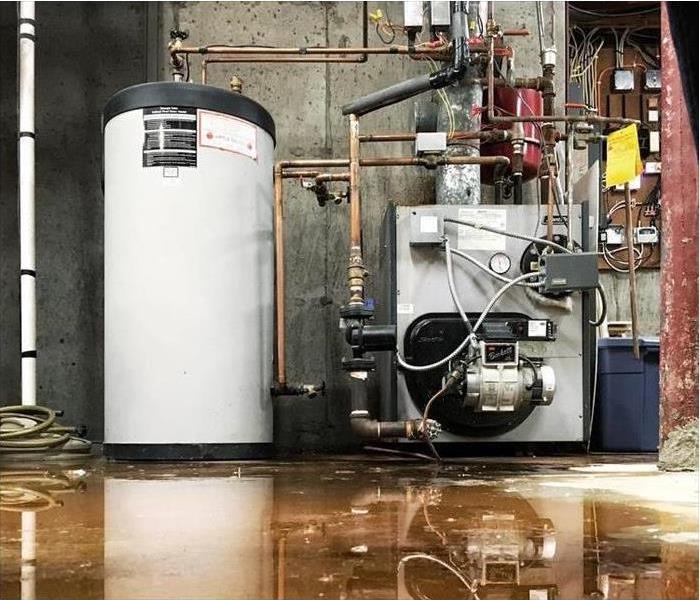 Avoid costly water damage by automatically detecting and stopping leaks from your washing machine, water heater, toilet and other appliances.
Avoid costly water damage by automatically detecting and stopping leaks from your washing machine, water heater, toilet and other appliances.
Every water appliance, fixture supply tube and pipe in your home has the potential to leak. And because it is fed by water pressure from city supply line or well pump, once a leak starts, there's nothing to stop it. If you're home and catch the leak early, you can stop the water flow by using fixture shutoff valves or the house's main shutoff valve. But if you're away from home, sleeping or you don’t notice the leak, you’ll probably suffer costly water damage.
If only there was a device that could detect a leak and shut the water off for you!
Good news: an automatic water shutoff valve is a simple electric device that does exactly that. One of these devices can cost as little as $200—and can save your house from a flood that can easily cause upwards of $10,000 of damage in just a few hours.
Two Types of Water Shutoff Valves
The sole job of an automatic water shutoff valve is to sense a water leak and stop the water flow by closing an internal ball valve. That simple action is triggered by a water sensor that you place on the floor where a leak is likely to occur, usually adjacent to a water appliance, such as your refrigerator, washing machine, toilet, dishwasher or water heater. If the sensor detects water up on the floor, it sends a signal to the valve, which then shuts off the water flow—which stays off until you turn it back on or reset the system.
A typical automatic water shutoff device includes several sensors that connect wirelessly to the valve unit, which can shut off your home's main water supply or just one appliance or fixture water supply line.
Single-location shutoff valves are used to protect the pipes or hoses serving the appliances most likely to leak:
- Washing machine
- Water heater
- Toilet
Other appliance supply lines that commonly leak include those for refrigerator/freezer water dispensers and ice makers, water filtration systems and humidifiers, as well as any sink faucet or other plumbing fixture.
To protect more than one appliance or fixture, install a whole-house shutoff valve. These devices are typically located near the existing main shutoff valve where the water supply pipe enters the house. The sensors can then be placed throughout the house to provide protection to all areas prone to leaks.
We’re all at the mercy of a sudden water leak in our homes. One way to minimize the water damage and costs of a home flood damage cleanup is to install automatic water shutoff valves near your water appliances or fixtures.
We’re Here for You
The team at SERVPRO of Glastonbury/Wethersfield has specialized training and experience in water damage remediation, fire restoration services, natural disaster prevention, chemical cleanup, and natural disaster cleanup. Call SERVPRO of Glastonbury/Wethersfield (860.633.8791) any time.
When you have suffered a water or other disaster at your home or business, call SERVPRO of Glastonbury/Wethersfield today at 860.633.8791
Other Helpful Blog Posts
SERVPRO® publishes educational articles on how to protect your home or business from disasters and how to deal with mold, fire, water, sewage, storm and other damage.
SERVPRO of Glastonbury/Wethersfield
IICRC Certified
Noemi Garcia
Franchise Owner
Call 860.633.8791
Fax 860.216.2762
24-hour emergency service
When you have suffered a water or other disaster at your home or business, call SERVPRO of Glastonbury/Wethersfield today at 860.633.8791
Floodwaters are Dangerous! Stay Safe by Knowing the Risks
5/28/2020 (Permalink)
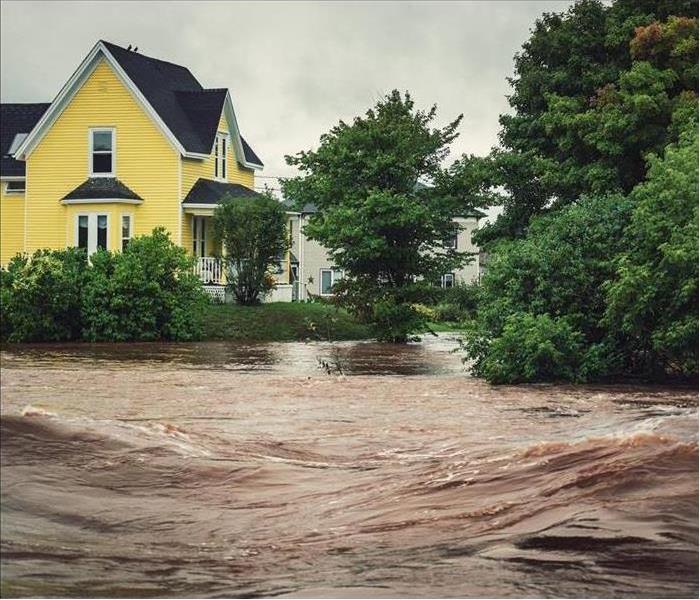 Beyond surviving the flood and managing the cleanup, you also need to avoid the hidden and sometimes deadly dangers of floodwaters.
Beyond surviving the flood and managing the cleanup, you also need to avoid the hidden and sometimes deadly dangers of floodwaters.
Floods are among the most devastating natural disasters. They can destroy homes and property, leaving you with a challenging cleanup and an uncertain recovery. In addition to all that, floodwaters also pose less-obvious safety hazards to you and your family. You’ll be safer if you know what the often-hidden risks are after a flood.
Electrical Hazards
Because storms that cause flooding can bring strong winds, power lines often get knocked down, putting you at risk for electrocution if you walk or drive through flooded areas. If you see downed power lines near your home, don’t go near them. Instead, stay away from the water, get to a safe place and alert local authorities.
Your home’s electrical system may have been damaged in the flood, so don’t turn on light switches or use electrical appliances until you have your system checked for safety.
Chemicals and Waste
Floodwaters are often filthy and contaminated with chemicals and sewage. Stay out of the water as much as you can to avoid gastrointestinal issues, infections and rashes. Have your home’s water supply tested for safety before drinking, cooking or bathing.
Debris
Floodwater can hide sharp objects or other dangerous debris. If you must walk or drive through floodwater, protect yourself by wearing rubber boots, gloves and eye protection.
Insects and Animals
Keep a lookout for wild animals, such as snakes and rodents, in floodwaters. Mosquitos can also increase in flooded areas, so get rid of standing water in buckets, gutters, pools or other containers as soon as possible.
Be Safe During After-Flood Cleanup
When you return home to start water restoration cleanup, avoid illness or injury by following some additional safety tips.
Keep Clean
- Wash your hands frequently with soap and clean water, especially before you eat or drink.
- Each day, wash any clothing that has come in contact with floodwater separately from other clothing in hot water and laundry detergent.
Keep Healthy
- If you have an existing wound, avoid exposing it to floodwater. Wear gloves and clean the wound frequently with clean water and soap, and change the wound dressing often.
- If an existing wound develops redness or swelling, or you notice other signs of infection (such as a high fever or pain), seek medical attention as soon as possible.
- If you sustain a wound during cleanup, especially from a dirty object, seek medical attention ASAP.
We’re Here for You
The team at SERVPRO of Glastonbury/Wethersfield has specialized training and experience in water damage remediation, fire restoration services, natural disaster prevention, chemical cleanup, and natural disaster cleanup. Call SERVPRO of Glastonbury/Wethersfield (860.633.8791) any time.
When you have suffered a water or other disaster at your home or business, call SERVPRO of Glastonbury/Wethersfield today at 860.633.8791
Other Helpful Blog Posts
SERVPRO® publishes educational articles on how to protect your home or business from disasters and how to deal with mold, fire, water, sewage, storm and other damage.
SERVPRO of Glastonbury/Wethersfield
IICRC Certified
Noemi Garcia
Franchise Owner
Call 860.633.8791
Fax 860.216.2762
24-hour emergency service
When you have suffered a water or other disaster at your home or business, call SERVPRO of Glastonbury/Wethersfield today at 860.633.8791
Keep Your Basement Dry!
5/19/2020 (Permalink)
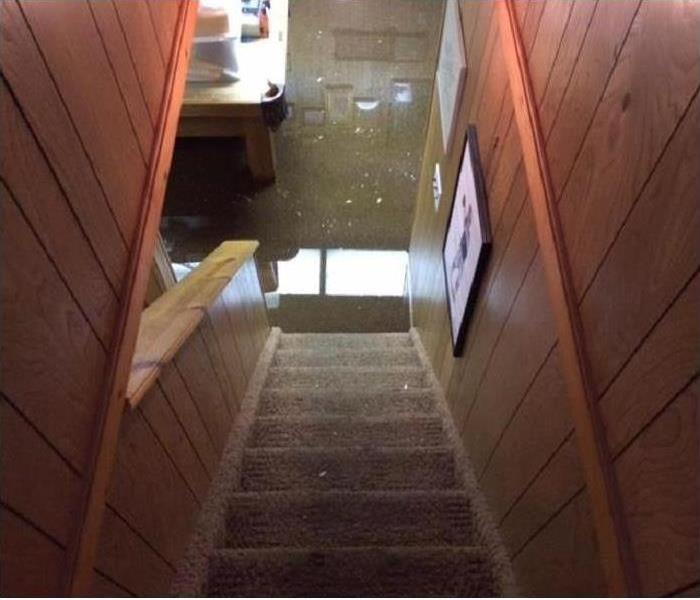 Avoid a flooded basement by directing outside water away from your home and keeping your foundation in good condition.
Avoid a flooded basement by directing outside water away from your home and keeping your foundation in good condition.
Located below grade and surrounded by soil, your basement is one of the most vulnerable parts of your home, prone to flooding from seasonal storms, melt water, burst washing machine hoses, failed sump pumps and leaking water heaters. Among the problems caused by wet basements are mold contamination, building rot, peeling paint, foundation collapse and termite damage. In fact, 98% of Americans’ basements will experience water damage at some point! That seems bleak, but there are many ways you can protect your basement from water damage.
First, see our comprehensive article on ways to prevent water damage from household appliance malfunctions. And read on for methods you can use to stop outside water from getting inside your basement and wreaking havoc.
The key to keeping water out is to keep it away from your home’s foundation and close up any potential cracks or leaks. The most common causes of wet basements are poor roof drainage and improper site grading. Soil releases water it has absorbed when it rains or when snow melts, and the water can end up in the basement through leaks or cracks.
Protecting, repairing and waterproofing your basement will greatly reduce the risk of damage caused by moisture or water.
Direct Water Away from Your Foundation
Your goal is to have water flow freely away from the foundation instead of toward it, and never have it pool near your home.
- Gutters and downspouts should be properly installed and maintained so that they move rainwater and snow melt at least 10 feet from your home.
- Your yard should be sloped away from your home for a distance of 10 to 15 feet, and low spots should be evened out to prevent water from pooling.
- If any side of your home faces an unavoidable upward slope, direct water around to the downhill side by creating shallow ditches called swales.
Repair Your Foundation
Water and moisture will find a way into your basement through small cracks or holes in the foundation, due to poor workmanship during construction, water pressure from the outside or settling of your house.
Check your entire basement for moisture, leaking or discoloration, which are signs that water may be entering through cracks or holes. Then, get to work repairing your foundation.
- Fill small hairline cracks and holes with a mixture of epoxy and latex cement.
- Fill cracks larger than 1/8-inch with a fairly stiff mortar made from one part cement, two parts fine sand and a little water. Press the mortar firmly into all parts of the cracks and holes to eliminate air bubbles.
Seal Your Walls and Floor
Once you’ve diverted runoff away from the foundation and repaired any cracks and holes, a final step is to apply a waterproof sealant to your walls and floor. Experts recommend using sodium silicate, a water-based mixture that will penetrate the substrate by up to 4 inches.
We’re Here for You
The team at SERVPRO of Glastonbury/Wethersfield has specialized training and experience in water damage remediation, fire restoration services, natural disaster prevention, chemical cleanup, and natural disaster cleanup. Call SERVPRO of Glastonbury/Wethersfield (860.633.8791) any time.
When you have suffered a water or other disaster at your home or business, call SERVPRO of Glastonbury/Wethersfield today at 860.633.8791
Other Helpful Blog Posts
SERVPRO® publishes educational articles on how to protect your home or business from disasters and how to deal with mold, fire, water, sewage, storm and other damage.
SERVPRO of Glastonbury/Wethersfield
IICRC Certified
Noemi Garcia
Franchise Owner
Call 860.633.8791
Fax 860.216.2762
24-hour emergency service
When you have suffered a water or other disaster at your home or business, call SERVPRO of Glastonbury/Wethersfield today at 860.633.8791
Prevent Household Appliance Water Damage
5/15/2020 (Permalink)
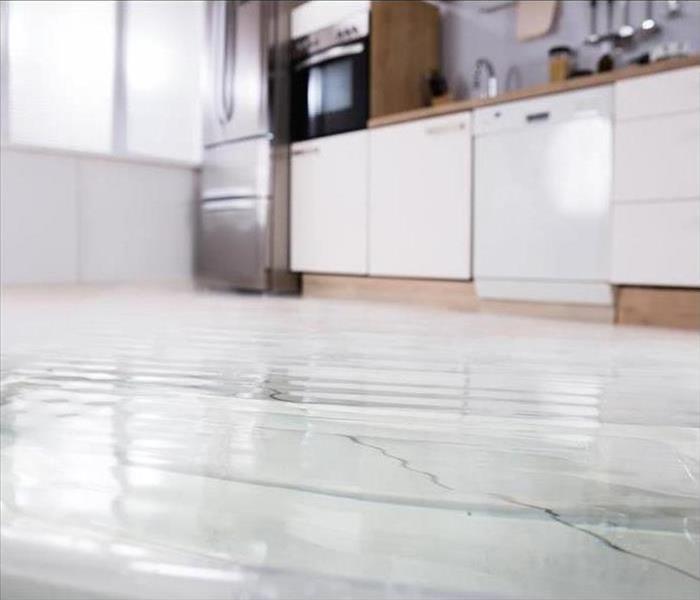 Prevent an appliance flood or stop one in its tracks with some regular maintenance in your kitchen, bathroom, basement and laundry area.
Prevent an appliance flood or stop one in its tracks with some regular maintenance in your kitchen, bathroom, basement and laundry area.
We rely on our household appliances to do so many tasks: washing our clothes and our dishes, providing hot water, keeping our food cold, flushing away waste. But a sudden plumbing problem can be a disaster, with water leaking (sometimes undetected) and causing severe damage to your home and possessions: basement water damage, a washing machine leak or a flood from your toilet or sink.
That’s why it’s a good idea to regularly check up on your appliances and plumbing fixtures, to identify and repair problems before they become costly water emergencies. You’ll want to focus your attention on the three major types of appliances and fixtures: the bathroom, the kitchen and the basement/laundry area.
Start by understanding how long an average household appliance lasts:
Washing machine 5–7 years
Dishwasher 7 years
Refrigerator 7 years
Water heater 15 years
First: In Case of a Leak
A sudden leak from a toilet, washing machine or other appliance can announce itself with a flood of water. But you may notice a more subtle sign of a looming water disaster: puddles around the bases of tubs, toilets and showers or beneath the water heater, dishwasher and washing machine.
Either way, your first step is to stop the water from leaking by shutting off the water supply to either the appliance, or if necessary, the whole house. Depending on where the leak is and how big it is, shut off the electricity to your home to prevent shocks.
Whole House Valves
- If you have a well, look for the shutoff valve on the house side of the pressure tank (you should also cut power to the tank).
- If you have metered water, look for the shutoff valve on either side of the water meter (located in the basement, on an exterior wall or even out by the street). This valve will normally be a gate-type valve, with a round knurled handle, requiring several full clockwise rotations to turn off. In newer homes, it could be a ball valve.
- Whole house hot water shutoff: There should be a valve on the hot-water outlet of your water heater, which controls all the hot water to your house. (If there isn't a valve on your hot water heater, you or your plumber should install one.)
Appliance Valves
These supply stops usually have a small round or oval handle that you turn clockwise two to four full turns to shut off the flow of water.
- Toilet: The shutoff valve, which typically has a ribbed oval handle, should be under the toilet tank.
- Sink: These shutoffs usually sit just beneath the sink, within the cabinet or vanity if you have one. The hot water valve is usually on the left and the cold water valve on the right.
- Dishwasher: Look first under the kitchen sink to locate a reducer coupling and shutoff valve on the 1/2-inch hot-water sink-supply line. If it’s not there, check your basement for it between the ceiling joists just below the dishwasher.
- Washing machine: You’ll find the hot and cold shutoff valves where the house-supply lines meet the washer hoses. Make it a practice to always close the valves when leaving home for an extended period.
Repair Water Damage … For Good
Once you’ve stopped the flow of water, clean up any standing water in your kitchen, bathroom, basement or laundry room. This will help prevent slips and falls, reduce the chances of water damage to home and furnishings, and minimize the odds of mold growth.
After you’ve done basic cleanup, you need to dry your home and repair any damage. It’s essential that your home be dried out within about 48 hours, because after that mold may grow on damp wood, paper and particle board.
An experienced disaster remediation company like SERVPRO of Glastonbury/Wethersfield has the resources and expertise to get to your home fast, stop the leak and completely clean up the damage, restoring your home to its before-disaster condition.
Preventing Leaks with Monitoring
The best way to deal with a leak or flood is to prevent one in the first place. And one way you can do that is to use a detector or alarm to monitor for and catch leaks as they start. Some devices even shut off water to your appliance if they detect a leak.
Electronic leak detectors use wireless water sensors to detect water leaking from an appliance onto your floor. They either sound an alarm (battery-operated models) or can be wired to an automatic shutoff valve (on your main water line or at individual shutoffs). Some versions can be wired into a centrally monitored alarm system or automatically call you by phone when the alarm sounds.
With a battery-powered water leak alarm, you place the sensor on the floor next to plumbing fixtures and appliances, like washing machines and water heaters. You can also set a sensor on your basement floor to detect and warn you if water is seeping in from outside or if your sump pump has stopped working. Water leak detectors are effective only if you hear the alarm and turn off the water.
Another option is a single-point leak detection and automatic shutoff system. Plug this type of water leak detector into an electrical outlet and place its sensor on the floor. An electric shutoff valve turns off the water to your appliance or entire home when leaks are detected.
Finally, a water flow sensor can be installed on a home's main water line and programmed to allow normal water flow. If water flow exceeds a specified amount, a valve will close to stop the flow of water.
Preventing Leaks in the Kitchen
Garbage Disposal
Check the drain connections where the dishwasher discharge connects to the disposal, or where the disposal discharge runs to the sink drain. Inspect and tighten the connections or replace the gaskets if they show signs of leaking. A garbage disposer that has a foul smell should be cleaned.
Dishwasher
Watch and listen to the dishwasher in action. A dishwasher that fills slowly may have a problem with the water supply hose or the shutoff valve that controls it. If the dishwasher is slow to drain, or if water remains in the bottom of the dishwasher after the cycle is over, inspect the water discharge hose for clogs or pinching.
If the drain hose cracks or tears or connections become loose, the dishwasher may lose water onto the floor before it exits through the end of the line. Remove the kickplate below the dishwasher door, run the dishwasher and look under the machine for water leaks at the hose clamps or along the hose. Tighten any loose fittings or install a replacement hose.
Refrigerator
Check the water supply hose for signs of wear and replace it if you see any damage.
Replace the filter on a refrigerator that has a water dispenser and ice maker twice each year. A clogged filter can block water flow and lead to a leak.
Sink Drains
A kitchen sink strainer is a common place for leaks to start. Observe the strainer area and the P-trap as water in the sink drains out. You may see that you need to tighten the P-trap fittings, or replace the strainer basket if it begins to leak or is corroded. A sink that drains too slowly may have a clog building in the P-trap or branch drain, in which case you should disassemble and clean these fittings.
Periodically, you should clean the kitchen sink drain by running a mild homemade drain cleaner through it to break up the usual buildup in the drain and keep the water flowing.
Faucets
A leaky kitchen faucet is the single most common plumbing repair. It may seem minor and just an annoyance, but a dripping faucet can quietly cost you hundreds of gallons of water each year. Watch your faucet carefully as you operate the lever, and repair the faucet if it requires it.
Preventing Leaks in the Bathroom
Bathroom Faucets
Check your sink, tub and shower faucets regularly for leaks, and if you spot any drips, replace worn washers or cartridges.
If you turn on the faucet and spot a drop in water pressure or an uneven pattern of spray, that may be a sign that calcium is building up on the aerator. Remove the aerator and soak it in vinegar or clean it manually.
Act fast and call a plumbing expert if you notice signs of water damage in the room below the tub and shower supply lines. Hidden behind walls, a leak here can cause major damage without you knowing it.
Bathroom Drains
Periodically, you should disassemble traps in the tub, shower and sink drains and remove hair and debris clogs rather than waiting for these to become full blockages. At the same time, you can also snake out the branch drains to remove clogs.
Toilets
Start by removing the tank lid on the toilet and watch what happens as you flush it. A toilet that continues to run rather than shutting off at the end of the flush cycle is wasting a lot of water. Fixing a running toilet is often easy—it may be as simple as replacing an old, brittle flapper.
If your toilet rocks slightly when you sit on it, or if you notice water seeping around its base, the wax ring that seals the toilet base to the drain opening may need to be replaced before it leaks.
Caulking Around Bathroom Fixtures
The caulk around tubs and showers can allow water to get behind walls and under floors when it dries and cracks. Check the caulk beads along floors and walls and seal any gaps with fresh caulk. It’s a good idea to remove the old caulk every few years and apply a new bead of high-quality silicone tub-and-shower caulk.
Preventing Leaks in the Basement and Laundry Area
Water Heater
Look for leaks around the base of the water heater, which may be caused by a faulty temperature and pressure (T and P) relief valve, or a bad drain valve. Check for signs of water leaking in the cold water inlet pipe and hot water exit pipe above the water heater.
Every few years, the water heater tank should be flushed to remove sediment from the bottom of the tank, which can lead to clogs and potential leaking. You can do this yourself or hire a professional.
Washing Machine
Periodically, turn off the water supply and pull the washing machine away from the wall to do an inspection.
Check the fill hoses for signs of wear. If you see any rubber hoses that are beginning to bulge, replace them immediately—a burst hose (especially if you are away from home) can cause an expensive washing machine flood. Replace worn or even slightly damaged hoses as soon as possible.
Check for loose connections between the hoses and the valves that control them. If loose, tighten the connection of the drain hose, the water hose to the washer valves and the connections of the water hoses to the inlets. Also, test the valves themselves and replace them if they do not completely stop the flow of water when shut off.
An unbalanced machine can make the entire appliance shake while it spins and agitates, causing water to spill out onto your laundry room floor. Adjust your washing machine pedestal, level the floor or re-level the machine itself to restore balance.
If you see water escaping during the spin cycle, but the machine is level, inspect the hoses for other signs of clogs, loose connectors or other damage. A clogged drain hose will send water overflowing onto your laundry room floor. Clear the clog by softening it with hot water and fishing it out with a straightened wire hanger.
Sump Pump
If your home has a basement with a sump pit and pump, check periodically to make sure it is operating properly. Do this by filling the sump pit with water manually and making sure the pump activates and pumps out the water.
Consider investing in an emergency backup battery system for your sump pump so that it will still operate during power failures, and will sound an alarm when maintenance is needed or a battery problem is detected.
We’re Here to Help®
If you do suffer damage from a toilet leak, sink overflow, washing machine flood or water heater leak, you’ll need to act fast. Step one is to call an experienced water damage remediation company, such as SERVPRO of Glastonbury/Wethersfield. We’re here to help® when you have property and structure damage from a water disaster—and we’ll get the job done quickly and completely!
When you have suffered a water or other disaster at your home or business, call SERVPRO of Glastonbury/Wethersfield today at 860.633.8791
SERVPRO of Glastonbury/Wethersfield
IICRC Certified
Noemi Garcia
Franchise Owner
Call 860.633.8791
Fax 860.216.2762
24-hour emergency service
When you have suffered a water or other disaster at your home or business, call SERVPRO of Glastonbury/Wethersfield today at 860.633.8791
Water Damage from a Frozen Pipe? Here’s What To Do
2/20/2020 (Permalink)
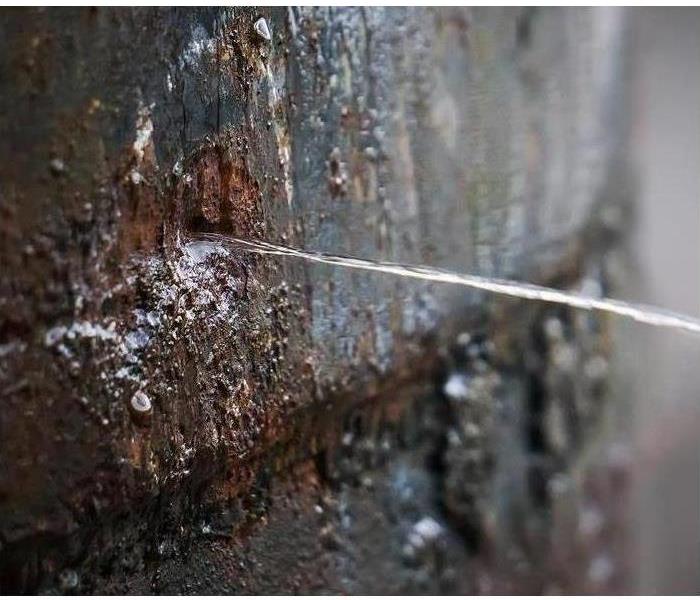 Cold temperatures and exposed pipes can wreak havoc on your home and furnishings. Follow our tips to prevent frozen pipe damage.
Cold temperatures and exposed pipes can wreak havoc on your home and furnishings. Follow our tips to prevent frozen pipe damage.
When temperatures drop below freezing, unprotected pipes can freeze from a combination of exposure, wind chill and subfreezing weather. And a frozen pipe can quickly become a burst pipe, which can do incredible amounts of damage in a short period of time. Read on for ways to avoid a frozen pipe water disaster—and ways to minimize the damage if you do suffer a frozen and burst pipe.
As water freezes in a pipe, the ice first blocks it completely and then expands. This causes the water pressure in the pipe to increase, sometimes up to 1,000-fold! Too much pressure will rupture the pipe. The rupture usually occurs where water pressure finds a weak spot in the pipe, often not at the point where a pipe froze, but between the freeze and a faucet. Then, either during the freezing weather or after the frozen pipe thaws, water seeps or even gushes into your home or office. Sometimes this happens out in the open, but often it occurs in an attic or basement or behind walls or ceilings.
Severe damage can occur before you are even aware that a pipe has burst. That’s no surprise, considering that up to 250 gallons of water can flow from a ruptured pipe in just 24 hours. And that kind of damage is expensive: the average insurance claim for residential water damage is $10,000–15,000 and total cleanup costs can reach $70,000.
Keep Those Pipes from Freezing
Avoid that kind of water damage by preventing your pipes from freezing—and that means making sure your pipes are too warm to freeze. Steps taken at the beginning of winter or before a freeze can save you a lot of expense later on.
Warm your pipes
The first step is to evaluate your pipes. Check unheated and un-insulated areas of your house, such as your basement, attic, garage and crawl space. Look under bathroom and kitchen sinks. Examine your exposed pipes to determine which ones are at risk of freezing. Note any pipes that show wear or damage.
- Don protective gear and wrap un-faced fiberglass insulation around at-risk pipes in the attic, crawl space or other out-of-the-way place. Don’t worry about being neat, just protect those pipes—and don’t leave any gaps.
- An alternative is to use pipe sleeves. Butt the pieces tightly against each other and seal the slits and joints with duct tape.
- Install a heat trace cable, either wrapped around the pipe or running its length. Ready-to-use cable, with one end terminated and insulated and the other end equipped with an electrical plug, is easiest and safest to apply.
Pay attention to the exterior of your home, too.
- Disconnect garden hoses from outside faucets to prevent water from freezing in the hose and rupturing the faucet. Drain the hoses and store them inside.
- If your exterior faucets have cut-off valves, close them and drain the faucets. If they don't, insulate them with foam faucet covers.
Keep your home warm
- Use caulk to seal around doors, windows, exterior faucets and outside outlets.
- To insulate a large area, perhaps in the attic or basement, install faced or un-faced foam board by scoring, snapping and screwing it to wood framing.
- Using rigid foam insulation, close and seal foundation vents near water pipes, and insulate foundation walls and the ends of the floor joists.
- Install storm windows over basement windows or replace broken or old windows with energy-efficient alternatives.
- If you have an un-insulated crawlspace, turn up your thermostat to warm it up.
If you travel during the cold season
If you will be away from your home at all during a freeze, take these steps to avoid returning to a burst pipe and a water disaster.
- Set your thermostat to 55° F or higher.
- Close the valve to the house's main water supply.
- Ask a trusted neighbor to check inside your home once a week.
- If you heat with propane or fuel oil, give your fuel supplier contact information for you and your neighbor.
- Install or subscribe to a freeze-sensing system to monitor your home's internal temperature using a phone or the internet; some even have automatic shut-off valves.
Consider a smart leak/flood detector
Smart leak/flood detectors and water-shutoff valves let you remotely and immediately stop a flood of water, preventing or minimizing water damage. These detectors connect directly to your home’s WiFi and offer a smartphone app, so you can control them and receive alerts wherever you are. The app will alert you if there’s a drop in pressure, indicating a leak has occurred. Depending on the product’s design, you can use the app to quickly shut off the water or it can do so automatically.
Actions to Take During a Freeze
When the temperature plunges, keep a close watch on all your chilly areas and vulnerable pipes.
- Turn faucets on to allow a trickle of water to flow through the pipes.
- Allow room air to warm pipes by opening doors to cabinets, vanities, closets and pantries.
- Set up fans to blow heat into cold rooms or your crawl space.
- Run space heaters to warm up areas near pipes, but don't overload circuits or use extension cords.
- Keep the garage door closed if it contains water supply lines.
- Warm the most vulnerable pipes with a hair dryer, heating pad or even cloths soaked in hot water. Leave the faucet on while you apply heat.
- If water pipes inside an exterior wall are freezing, don’t hesitate: cut an opening in the wall to expose the pipes to the home's warm air. Place fiberglass insulation around the pipes and against the exterior wall. (Don’t worry about the hole—you can cover it later with a hinged door or panel, which will allow access during future freezes.)
Signs of a Frozen Pipe
If you notice any of these conditions, you may have a frozen or burst pipe:
- Dripping, bubbling, whistling or sounds of water rushing in pipes or behind walls.
- Discolored water coming from your faucets.
- A drop in water pressure when you wash your hands, fill your sink or take a shower.
- No water at all coming out of a faucet or a toilet that doesn’t refill after flushing.
- Odd or unpleasant odors from drains, sinks or other areas of your house.
- Bulging and discoloration or water marks on walls and ceiling.
- Drips, puddles or gushing water.
Your first step is to narrow down the location of the frozen pipe. Remember, frozen pipes tend to be located along exterior walls that are not well insulated, or in basements, attics or crawl spaces. Do this by turning on all the faucets and seeing which ones don’t work.
- If all the faucets in a single room don't work, the frozen pipe is on the room’s side of its split from the main line.
- If all the faucets on the floor don't work, the freeze is between where the first and second floor pipes diverge.
- If no faucets in the home work, the freeze is likely near where the main water pipe enters the house: at the water meter, in the crawl space or at the water softener, if it is in the garage.
Once you have a general idea where the frozen pipe is, take a closer look:
- Visually inspect any exposed plumbing in your attic, basement, garage or crawl space, and under sinks. The frozen pipe may have a layer of condensation on it or even a white area where the condensation froze.
- Touch the pipes to check for a temperature difference. A frozen area will be colder than everywhere else.
How to Thaw a Frozen Pipe and Locate a Leak
If the pipe is still frozen, there’s no water leaking … yet. This gives you time to prevent or minimize water damage.
- Shut off the water at the main valve or the meter in case the pipe does burst. Then, open up all the faucets in your house to relieve pressure.
- Thaw the ice blockage by warming the connecting pipe. Using a hair dryer, start at the faucet or fixture and work your way back. Or use an electric heating pad wrapped around the pipe or wrap pipes with towels soaked in hot water.
- Don't use a blowtorch, kerosene or propane heater or other devices with an open flame. A blowtorch can make the water in the pipe boil and cause it to explode and the others can create poisonous carbon monoxide.
When the pipe is thawed out, you’ll need to find out if it has burst somewhere along its length. The most likely places are pipes that run against exterior walls or where the water service enters the home through the foundation.
- Turn the water on and look and listen for leaks.
- If you notice a rushing sound in the walls or a flood of water, immediately shut off the water to your house.
- If your pipes thawed without bursting, they may have developed pinhole leaks. Run your fingers over seams and joints to check for hard-to-spot leaks.
- If you identify no apparent leaks, check each of your faucets in turn. If you notice low water pressure at a particular fixture, you may have a slow leak in that line.
Halt Water Damage … For Now
You’ve located water leaking from a pipe, so now’s the time to act fast and stop water damage in its tracks. Remember, SERVPRO of Glastonbury/Wethersfield has the resources and expertise to get to your home fast, stop the leak and completely clean up the damage.
- Depending on where the leak is and how substantial it is, shut off the electricity to your home to prevent shocks.
- For a pinhole leak, wrap duct tape around the pipe; this will often be enough to seal the leak until a plumber or water damage remediation company like SERVPRO® arrives.
- Another option is to fashion a temporary patch out of a piece of flexible rubber (such as an old radiator or heater hose), place it over the leak, lay a small block of wood over the patch and clamp it in place with a C-clamp.
- An even better option, especially for larger leaks, is a sleeve clamp, which is a circular clamp lined with rubbery material that forms a waterproof sleeve for the pipe. (Note: you’ll have to buy a clamp sized to your specific pipe.)
- If the burst pipe is overhead, drain the water out by punching or drilling “weep” holes in the ceiling.
Once the water has stopped flowing, clean up any puddles. This will help prevent slips and falls, reduce the chances of water damage to home and furnishings, and minimize the odds of mold growth.
Repair Water Damage … For Good
Now that you or your plumber has stopped the flow of water and you’ve done basic cleanup, you need to dry out your home and repair any damage. It’s essential that you dry out your home within about 48 hours, because after that, mold may grow on damp wood, paper and particle board.
An experienced water disaster remediation company like SERVPRO of Glastonbury/Wethersfield can do all the work and restore your home to its before-disaster condition.
When you have suffered a water or other disaster at your home or business, call SERVPRO of Glastonbury/Wethersfield today at 860.633.8791
We’re Here to Help®
If you do suffer damage from a water disaster, you’ll need to act fast. Step one is to call an experienced water damage remediation company, such as SERVPRO of Glastonbury/Wethersfield. We’re here to help when you have property and structure damage from a water disaster—and we’ll get the job done quickly and completely!
Other Helpful Blog Posts
SERVPRO publishes educational articles on how to protect your home or business from disasters and how to deal with mold, fire, water, sewage, storm and other damage.
SERVPRO of Glastonbury/Wethersfield
IICRC Certified
Noemi Garcia
Franchise Owner
Call 860.633.8791
Fax 860.216.2762
24-hour emergency service
When you have suffered a water or other disaster at your home or business, call SERVPRO of Glastonbury/Wethersfield today at 860.633.8791
Avoid Winter Water Damage in These 5 Home Areas
1/24/2020 (Permalink)
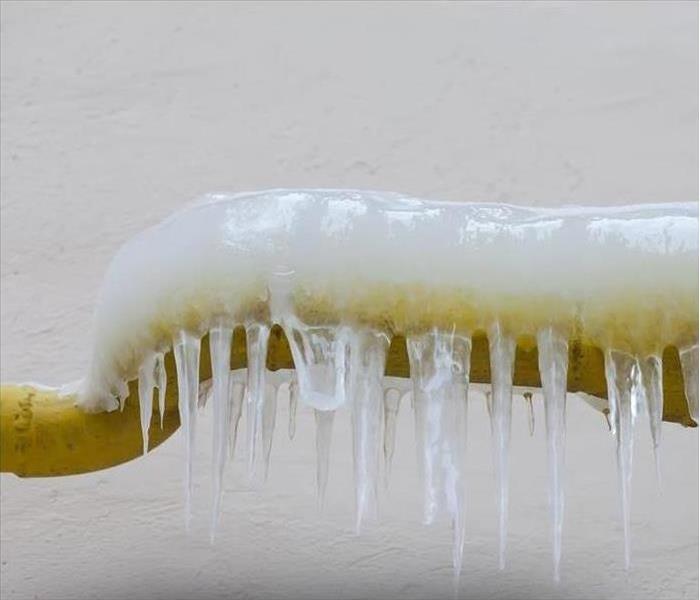 Cold temperatures make your home especially vulnerable to severe water damage. Follow these tips to keep your home safe.
Cold temperatures make your home especially vulnerable to severe water damage. Follow these tips to keep your home safe.
Water damage can be disastrous to homes and businesses during wintertime, especially during days when temperatures change, causing ice and snow to start to melt. Here at SERVPRO of Glastonbury/Wethersfield, we know that many of the worst kinds of winter water damage are preventable.
Here, we identify five areas of the home where leaking water can cause severe and costly damage to your home. Follow our guidelines to keep your property and belongings safe from a winter flood.
Pipes
A sudden or sustained drop in the temperature can cause the water in your pipes to freeze and expand, stressing the pipe and causing it to burst open. Prevent this winter water disaster by doing this before the weather turns cold:
- Identify vulnerable pipes (those in non- or lightly-heated areas such as exterior walls, basements and garages).
- Insulate or heat-wrap these pipes.
- Periodically check your pipes for signs of damage or wear and tear.
- Turn off the water supply to outside lines, disconnect any hoses and cover the hose bibs.
When the cold snap hits:
- Keep your home heated.
- Open kitchen and bathroom cabinet doors to allow heat to circulate.
- Run a trickle of water through vulnerable pipes.
- If you leave your home for even a couple of days during cold weather, turn off the water supply at the main shutoff.
Chimneys
Over time the brickwork and mortar of your chimney can develop cracks and gaps, causing leaks inside the chimney itself or in your attic or basement. Your chimney liner and cap can also leak as they age.
Check for loose mortar at least once a year, and look for any signs of water stains. You should have your chimney and fireplace or wood-burning stove cleaned and inspected by a certified chimney sweep every year before the winter heating season begins.
Caulking
Most doors and windows are sealed with caulking to protect your home against wind and water. However, as temperatures rise and fall, caulking naturally expands and shrinks, and eventually wears out and crumbles, allowing water inside your home.
Check your caulking for cracks and damage at least once a year, ideally before the winter weather hits.
Roofing
If the seams and flashing on your roof are worn out, this could lead to leaks when snow starts to melt, and you will end up with water damage in your attic, ceilings and walls. And if you don’t discover these leaks promptly, you can also end up with a hard-to-eradicate mold problem.
Have your roof inspected periodically, especially if it’s approaching the end of its guaranteed lifespan.
Gutters and Roof
If icicles form on your gutters, it’s much more than a pretty sight. It could also be a sign that you are at risk of developing an ice dam at the edge of your roof, which could cause water and mold damage to your roof, ceilings and interior walls.
Perhaps the most common cause of winter water damage, ice dams form when ice and water repeatedly thaw and refreeze, building up in a mound along the edge of the roof. You need to keep your attic cool enough so that snow and ice don’t have a chance to melt and refreeze on your roof.
To prevent ice dams:
- Seal gaps between the attic and your living area.
- Add extra insulation to your attic floor.
- Vent your attic properly.
- Allow melted snow and ice to run through your gutters and downspouts by clearing them of leaves and other debris.
When you have suffered a water or other disaster at your home or business, call SERVPRO of Glastonbury/Wethersfield today at 860.633.8791
We’re Here to Help
If you do suffer damage from a water disaster, you’ll need to act fast. Step one is to call an experienced water damage remediation company, such as SERVPRO of Glastonbury/Wethersfield. We’re here to help when you have property and structure damage from a water disaster—and we’ll get the job done quickly and completely!
Other Helpful Blog Posts
SERVPRO® publishes educational articles on how to protect your home or business from disasters and how to deal with mold, fire, water, sewage, storm and other damage.
SERVPRO of Glastonbury/Wethersfield
IICRC Certified
Noemi Garcia
Franchise Owner
Call 860.633.8791
Fax 860.216.2762
24-hour emergency service
When you have suffered a water or other disaster at your home or business, call SERVPRO of Glastonbury/Wethersfield today at 860.633.8791
Don’t Come Home to Water Damage!
6/14/2019 (Permalink)
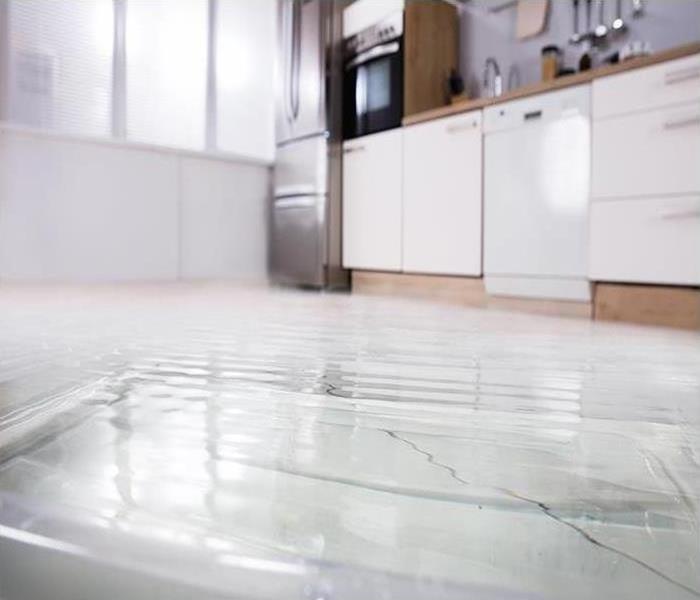 Take a few precautions before you go on vacation, and you may prevent a sudden flood in your home.
Take a few precautions before you go on vacation, and you may prevent a sudden flood in your home.
You’ve just returned from a relaxing summer vacation. What could be worse than opening your door and finding your home is flooded?
Unfortunately, this happens all too often: the second most common homeowner insurance claim is for water damage. Whether it’s from a ruptured washing machine hose, leaky supply line or burst pipe, the consequences can be devastating. And, if water has been present for more than 48 hours, you may also have mold damage.
To help avoid a water disaster while you’re away this summer:
- Test your sump pump and check for leaky pipes
- Check and replace old or damaged supply lines to your washing machine, dishwasher, water heater and refrigerator
- Turn off the water supply to your washing machine
- Clean your gutters and drain pipes
When you have suffered a water or other disaster at your home or business, call SERVPRO of Glastonbury/Wethersfield today at 860.633.8791
If you returned home only to discover that a water disaster has occurred, don’t delay: call a water damage remediation company like SERVPRO of Glastonbury/Wethersfield. We’re here to help when you have property and structure damage from a water disaster—and we’ll get the job done quickly and completely!
Other Helpful Blog Posts from SERVPRO of Glastonbury/Wethersfield
SERVPRO of Glastonbury/Wethersfield publishes educational articles on how Glastonbury and Wethersfield residents can protect their homes and businesses from disasters and how to deal with mold, fire, water, sewage, storm and other damage.
SERVPRO of Glastonbury/Wethersfield
We serve East Glastonbury, Glastonbury, Marlborough, Portland, Rocky Hill, South Glastonbury and Wethersfield, Connecticut.
SERVPRO of Glastonbury/Wethersfield
IICRC Certified
Noemi Garcia
Franchise Owner
Call 860.633.8791
Fax 860.216.2762
24-hour emergency service
Keep Water Out of Your Home
6/14/2019 (Permalink)
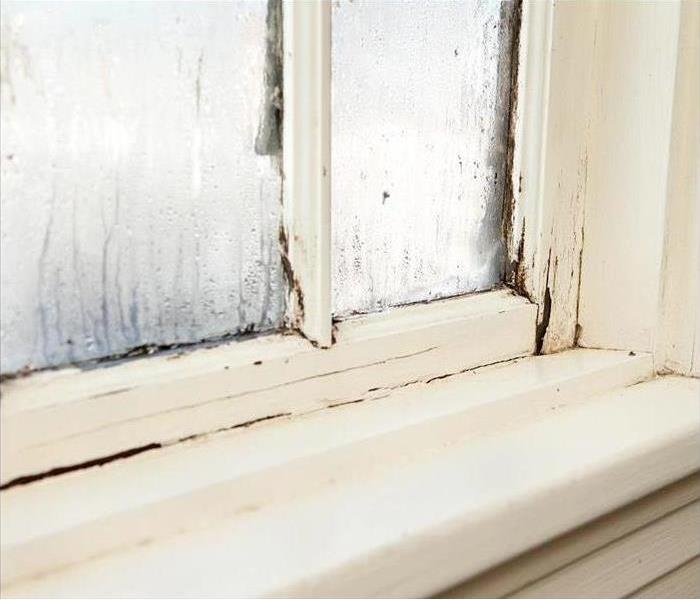 Taking some simple steps will help keep water from entering your home and causing water and mold damage.
Taking some simple steps will help keep water from entering your home and causing water and mold damage.
Water damage is one of the most common and costly disasters affecting American residences, accounting for billions of dollars in losses to homeowners and renters each year. Here are some simple steps you can take right now (okay, this weekend!) that will go a long way toward preventing water damage to your home.
- Caulk and seal windows to guard against water seepage
- Inspect your roof for missing, damaged and aging shingles
- Check downspouts. Remove accumulated debris and position downspouts to direct water away from the house
- Check sprinklers and irrigation systems. Be sure they are not damaging the walls and foundations of the house
- In winter, turn off and drain outside faucets to protect against frozen pipes
- Install gutter guards to prevent clogging so that water flows easily from the roof
When you have suffered a water or other disaster at your home or business, call SERVPRO of Glastonbury/Wethersfield today at 860.633.8791
If you do suffer damage from a water disaster, you’ll need to act fast. Step one is to call an experienced water damage remediation company, such as SERVPRO of Glastonbury/Wethersfield. We’re here to help when you have property and structure damage from a water disaster—and we’ll get the job done quickly and completely!
SERVPRO of Glastonbury/Wethersfield
We serve East Glastonbury, Glastonbury, Marlborough, Portland, Rocky Hill, South Glastonbury and Wethersfield, Connecticut.
SERVPRO of Glastonbury/Wethersfield
IICRC Certified
Noemi Garcia
Franchise Owner
Call 860.633.8791
Fax 860.216.2762
24-hour emergency service
The Right Equipment for Water Damage Cleanup
5/28/2019 (Permalink)
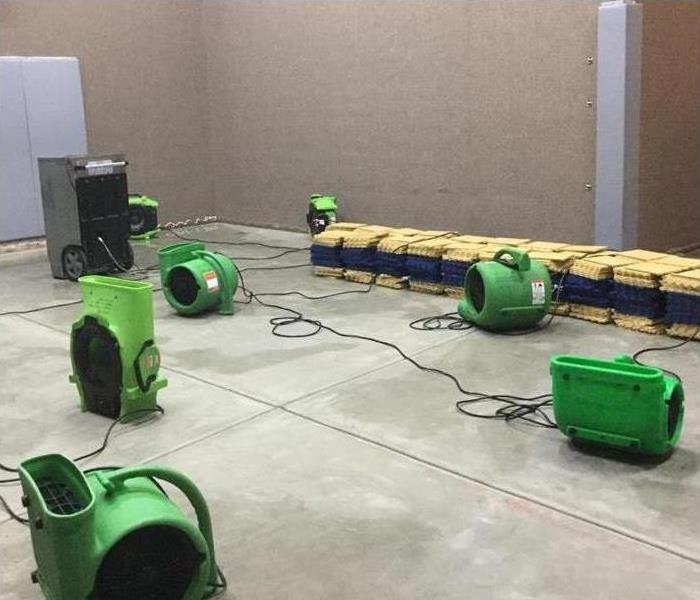 SERVPRO of Glastonbury/Wethersfield has the right equipment, staff and skills to quickly and completely clean up your water damage.
SERVPRO of Glastonbury/Wethersfield has the right equipment, staff and skills to quickly and completely clean up your water damage.
When you’ve suffered water damage to your basement, structure and property, the right water extraction tools are vital for timely, cost-effective drying and restoring.
To minimize water damage you must have accurate measurements of the air conditions—temperature, humidity, vapor pressure, dew point, etc.—so you can create the right atmosphere for efficient drying.
SERVPRO of Glastonbury/Wethersfield uses equipment like moisture sensors, moisture meters and thermohygrometers to define how much moisture has been absorbed. We also use advanced equipment to verify that your basement or other environment has dried thoroughly.
Removing water quickly means the environment dries much faster, and the most effective way to remove moisture is extraction. SERVPRO of Glastonbury/Wethersfield uses extractors to clean carpets, upholstery and floors after water damage. Our air moving and dehumidification equipment speeds up evaporation. And our deodorization equipment produces a mist that penetrates sites where odor-causing residues accumulate. Our water extraction teams also use ultra-low-volume foggers to inject fungicides and disinfectants into wall cavities and other hard-to-reach places.
We’re here to help when you have property and structure damage from a water disaster—and we’ll get the job done quickly and completely!
When you have suffered a water or other disaster at your home or business, call SERVPRO of Glastonbury/Wethersfield today at 860.633.8791
SERVPRO of Glastonbury/Wethersfield
We serve East Glastonbury, Glastonbury, Marlborough, Portland, Rocky Hill, South Glastonbury and Wethersfield, Connecticut.
SERVPRO of Glastonbury/Wethersfield
IICRC Certified
Noemi Garcia
Franchise Owner
Call 860.633.8791
Fax 860.216.2762
24-hour emergency service
How to Dry Out a Basement
5/14/2019 (Permalink)
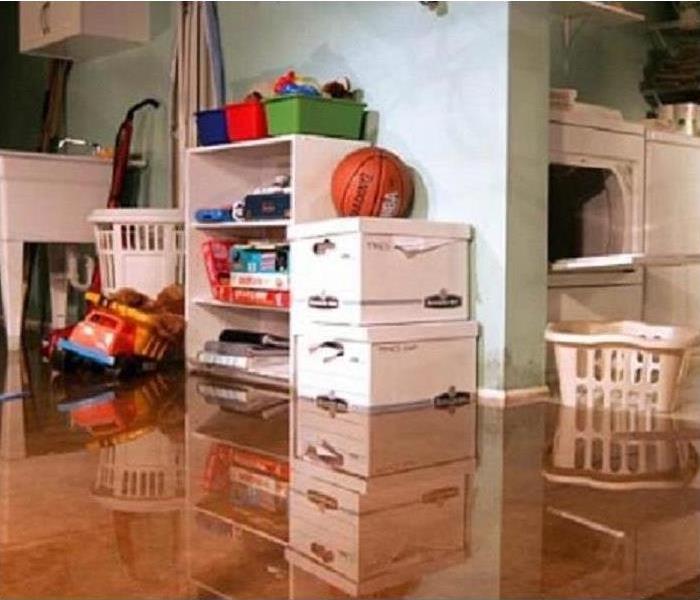 Professionals like SERVPRO of Glastonbury/Wethersfield have the right equipment and the know-how to clean up your water damage fast.
Professionals like SERVPRO of Glastonbury/Wethersfield have the right equipment and the know-how to clean up your water damage fast.
If your carpeted basement is flooded, follow these rules:
- If the floodwater was clean (broken pipe, burst washing machine supply hose or a foundation leak), you can probably dry out and save your carpet.
- But if you had a sewer backup, washing machine drain water spill or river flood, you need professional help. Pros are the only ones with the right equipment to get your basement dry and disinfected in the shortest possible time.
Either way, act fast! If the carpet isn’t dry within 72 hours, it’ll start to grow mold. Assuming your basement was flooded with clean water, here’s how you can do the cleanup yourself.
If your home or business suffers a flood, call SERVPRO of Glastonbury/Wethersfield today at 860.633.8791 to provide immediate expert water damage cleanup
Be Safe Above All
First, turn off the power to the basement. If you’re not sure which breakers power the basement, flip the main circuit breaker. If your electrical panel is in the basement, call an electrician to turn off the power.
Next, remove any extension cords and power strips from the floor and unplug or switch off all electrical appliances (washer, dryer, HVAC)—and if your appliances or furnace was under water, call appliance and HVAC specialists before plugging any of them back in. Ask the electrician (if you hired one) to repower the upstairs and inspect the basement receptacles to determine whether it’s safe to repower them. If not, you’ll have to buy several GFCI-equipped extension cords and run power from upstairs receptacles.
Next, remove all your valuable items from the basement. The longer they sit there, the more moisture they’ll soak up, and that means mold.
Time to Extract the Water
Don’t bother trying to dry out the carpet with a wet/dry shop vacuum—it simply doesn’t have enough power. Instead, rent an extractor (if available) or carpet cleaner, an air mover fan or two, and a large commercial dehumidifier. Rent the largest dehumidifier available (the big ones can remove up to 30 gallons per day, compared with 4 gallons for the largest home units).
Move the extractor slowly across the carpet to suck up as much water as possible. Don’t rush this step! Once the water is out, peel back the carpeting (watch out for the sharp nails) and remove the wet pad. (New carpet pad is inexpensive, so don’t waste time trying to dry the old pad.)
Lay the carpet back on the floor and fire up the air movers and dehumidifier. Keep the basement temperature at or below 75 degrees—a higher temp will accelerate bacterial growth and turn your basement into a petri dish.
If your home or business suffers a flood, call SERVPRO of Glastonbury/Wethersfield today at 860.633.8791 to provide immediate expert water damage cleanup
We're Here For You
The team at SERVPRO of Glastonbury/Wethersfield has the people, skills and equipment to help homeowners recover from water damage resulting from a flood. Call SERVPRO of Glastonbury/Wethersfield at 860.633.8791 any time, day or night.
Other Helpful Blog Posts from SERVPRO of Glastonbury/Wethersfield
SERVPRO of Glastonbury/Wethersfield publishes educational articles on how Glastonbury and Wethersfield residents can protect their homes and businesses from disasters and how to deal with mold, fire, water, sewage, storm and other damage.
SERVPRO of Glastonbury/Wethersfield
We serve East Glastonbury, Glastonbury, Marlborough, Portland, Rocky Hill, South Glastonbury and Wethersfield, Connecticut.
SERVPRO of Glastonbury/Wethersfield
IICRC Certified
Noemi Garcia
Franchise Owner
Call 860.633.8791
Fax 860.216.2762
24-hour emergency service
Your First Five Things After a Flood
5/9/2019 (Permalink)
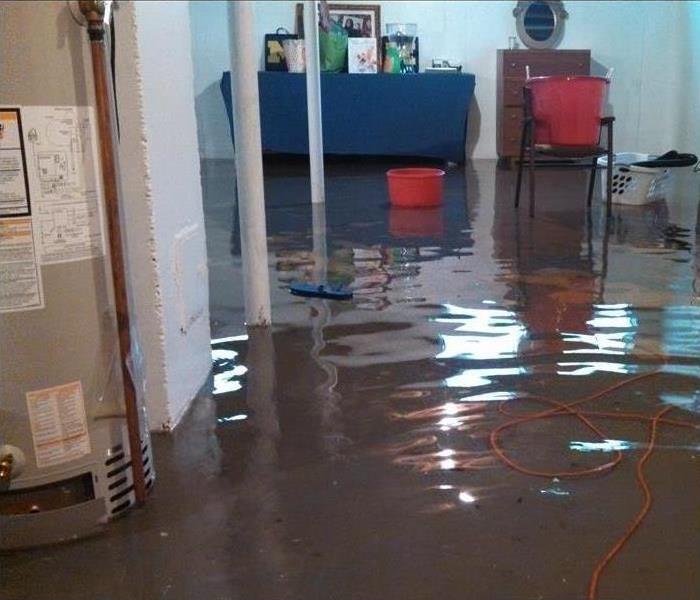 A flood in your home is devastating. Here are five things you can do to get started on recovering from a water disaster.
A flood in your home is devastating. Here are five things you can do to get started on recovering from a water disaster.
Disaster has struck, your home is flooded and you don't know what to do first. Here’s a list of five essential tasks to start with that will make your recovery from a water disaster safer, easier and faster.
1. Avoid Further Damage
First, you need to cut power to your home. Locate your circuit panel and shut off all the circuits, even if the power feed to the house is currently off.
Visually inspect the exterior of your property. Look for signs of potential danger, like a collapsed roof. If you are not sure that the home is safe to enter, don't go inside. Flood water could:
- Carry an electrical current to shock you or spark a fire
- Introduce bacteria and microbes into your home
- Make it harder to walk safely
- Weaken the structure of your home
2. Gather Important Papers
It’s best to be prepared for an emergency by keeping your papers organized and easy to find. The documents you might need include:
- homeowners’ policy records
- documentation of flood insurance, if applicable
- personal identification
- proof of ownership
If you can get through the house safely, locate this information and take it to a secure offsite place.
If your home or business suffers a flood, call SERVPRO of Glastonbury/Wethersfield today at 860.633.8791 to provide immediate expert water damage cleanup
3. File a Claim
The claims process could take days or weeks, so you should begin as quickly as you can. Here’s what you may need to pay for:
- determining the extent of damage
- flooring removal and replacement
- drying walls and foundation
- replacing damaged electrical and plumbing systems
4. Document Everything
Take pictures and video, and write down any information you have about the condition of your home. If the property deteriorates after the initial damage (due to fire caused by flooding or from growth of mold, for example), update your record to reflect it.
Keep receipts for everything you buy as you recover from the flood, no matter how small the purchase.
5. Begin the Repair Process
As soon as possible, remove the water from your home and completely dry the structure and your possessions. You can try to do this yourself, or hire a specialized professional disaster remediation company like SERVPRO of Glastonbury/Wethersfield to do the job quickly and thoroughly.
If your home or business suffers a flood, call SERVPRO of Glastonbury/Wethersfield today at 860.633.8791 to provide immediate expert water damage cleanup
We're Here For You
The team at SERVPRO of Glastonbury/Wethersfield has the people, skills and equipment to help homeowners recover from water damage resulting from a flood. Call SERVPRO of Glastonbury/Wethersfield at 860.633.8791 any time, day or night.
Other Helpful Blog Posts from SERVPRO of Glastonbury/Wethersfield
SERVPRO of Glastonbury/Wethersfield publishes educational articles on how Glastonbury and Wethersfield residents can protect their homes and businesses from disasters and how to deal with mold, fire, water, sewage, storm and other damage.
SERVPRO of Glastonbury/Wethersfield
We serve East Glastonbury, Glastonbury, Marlborough, Portland, Rocky Hill, South Glastonbury and Wethersfield, Connecticut.
SERVPRO of Glastonbury/Wethersfield
IICRC Certified
Noemi Garcia
Franchise Owner
Call 860.633.8791
Fax 860.216.2762
24-hour emergency service
Preventing Winter Water Damage to Your Home
1/25/2019 (Permalink)
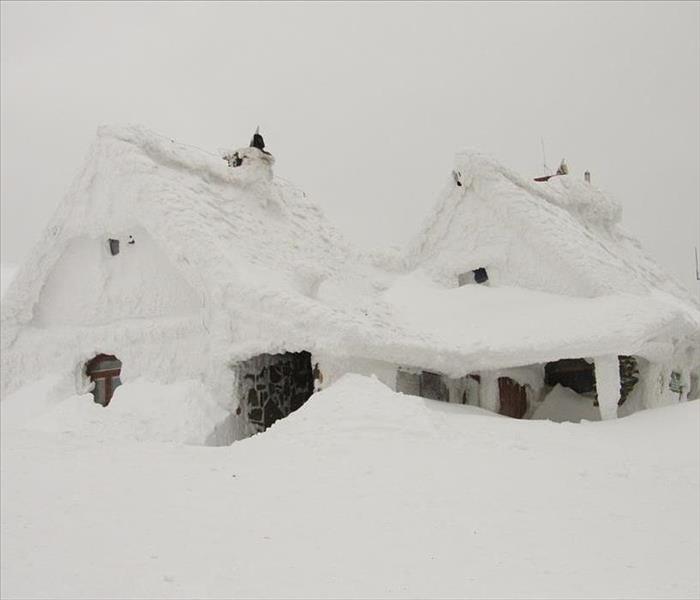 Connecticut's cold, snowy and icy winters pose a real risk of water damage to your home.
Connecticut's cold, snowy and icy winters pose a real risk of water damage to your home.
Winter is not just coming—it’s here already! And with a New England winter comes the increased risk of damage to your home from water leaks. Whether caused by burst pipes, storm damage, rooftop ice dams or other cold-weather hazards, your winter will be a little easier if you prepare your home to withstand the challenges and remain water-tight.
Brace Your Home for Winter’s Storms
When the wind howls and the snow and ice pile up, damage to your house can happen quickly and unexpectedly. These tasks can prevent storm-related damage to your home.
- Clean out the gutters, and disconnect and drain all outside hoses. If possible, shut off the inside valves that supply water to outdoor faucets.
- Have a contractor check your roof to see if it can sustain the weight of a heavy snowfall. Repair roof leaks.
- Remove tree branches that could get weighed down with ice or snow and fall on your house—or your neighbor's.
For professional water damage restoration services, call SERVPRO of Glastonbury/Wethersfield today at 860.633.8791
Prevent Burst Pipes
Since water expands when it freezes, it puts unwanted pressure on pipes, which can cause them to burst. You may not know right away that you have a burst pipe, as the water has turned to ice, but once the temperature warms and thawing begins, leaking and flooding can occur.
Not only will these tips help prevent a big leak from a pipe that bursts, you’ll also save some money on your heating costs in the long run.
- Insulate walls and attics, and caulk and weather-strip doors and windows.
- Wrap water pipes in your basement or crawl spaces with insulation sleeves. Consider an insulated blanket for your hot water heater.
- Keep your home’s temperature set at a minimum of 55 degrees, and make sure your furniture isn't blocking your heating vents. If you have a fireplace, keep the flue closed when you're not using it.
- Close inside valves supplying water to outdoor faucets and hookups. Open outdoor faucets to allow residual water to drain, and keep them open during the cold weather months, while the water supply is turned off.
During cold spells, you’ll want to:
- Keep kitchen and bathroom cabinet doors open to allow warm air to circulate around pipes.
- Keep a slow trickle of water flowing through faucets connected to pipes that run through unheated or unprotected spaces.
- If your house will be unattended during cold periods, consider draining the water system.
Avoid Ice Dams
Ice dams form when water from melted snow refreezes above your eaves or in the gutters and seeps in under the roof, soaking interior walls. Here’s how to prevent ice dams from forming on your roof:
- Adequately ventilate your attic.
- Insulate the attic floor well to minimize the amount of heat rising through the attic from within the house.
- Clear your gutters and downspouts of leaves and debris.
- Consider having a water-repellent membrane installed under your roof covering.
For professional water damage restoration services, call SERVPRO of Glastonbury/Wethersfield today at 860.633.8791
We’re Here to Help
If your home has suffered water damage from a storm, leak or burst pipe, call a professional with a solid record of serving the Connecticut region: SERVPRO of Glastonbury/Wethersfield at 860.633.8791, around the clock. We will treat your water damage like the emergency it is by responding promptly, evaluating the situation and repairing the damage to your home and possessions.
Other Helpful Blog Posts
Every month on the SERVPRO of Glastonbury/Wethersfield blog we publish educational articles on how Glastonbury and Wethersfield residents can protect their homes and businesses from disasters and how to deal with mold, fire, water, sewage, and winter storm damage.
We’re Here for You
SERVPRO of Glastonbury/Wethersfield
We serve East Glastonbury, Glastonbury, Marlborough, Portland, Rocky Hill, South Glastonbury and Wethersfield, Connecticut.
SERVPRO of Glastonbury/Wethersfield
IICRC Certified
Noemi Garcia
Franchise Owner
Call 860.633.8791
Fax 860.216.2762
24-hour emergency service
Commercial Water Damage Is Usually Preventable. Here's How.
6/21/2018 (Permalink)
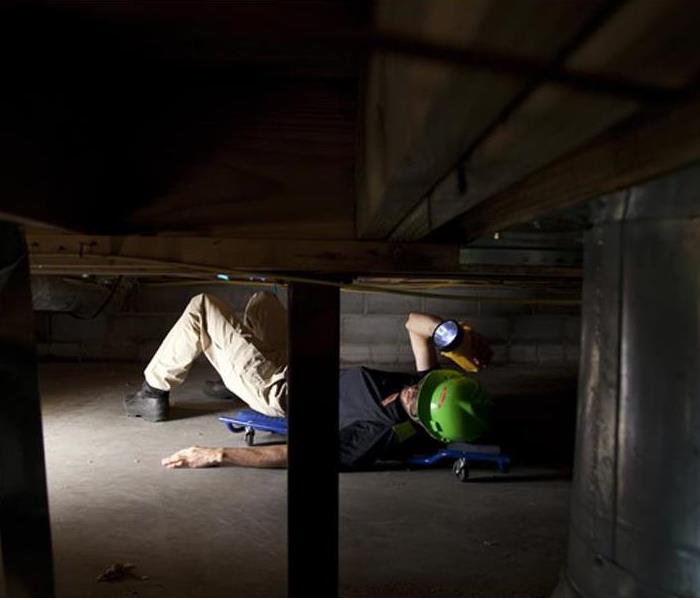 You can prevent most water damage at your business or commercial building
You can prevent most water damage at your business or commercial building
Ask the experts. They’ll tell you that most commercial property and business water damage does not have to happen. Smart commercial property owners know how to prevent most water damage and they know that preventing the damage saves them time and money. Here are some of the ways you can keep water damage at your business or commercial property to a minimum.
1. Talk to your team about water damage awareness
Train your employees and/or tenants to report any signs of water damage, no matter how small the leak. Solving small issues now often prevents larger, more costly issues from happening later.
2. Frequently check potential problem areas like windows, roofs, and exterior walls
Check your commercial building windows for tightness, weather-stripping, broken or cracked panes, weak flashing, and other signs of wear.
Closely examine your building’s roof. Are sealants intact around HVAC systems? Is the flashing around skylights, stack vents, and other rooftop elements in good condition? Is there no water pooling on the roof? Are drains and downspouts in good condition? From inside, do you see water stain marks? Can you see daylight when inside where you should not see it?
Check exterior walls to make sure all openings (plumbing, heating, lighting, fire alarms, vents, etc.) are sealed against water. See if the walls themselves need re-pointing or sealing. Check under sinks, angle stops, supply lines, shut off valves, water filtration systems, and in mechanical rooms. Schedule regular clean outs of main lines and air conditioning units in your building.
For Commercial Property Water Damage Restoration Call (860) 633-8791.
3. Monitor contractors
Monitor the work of outside contractors and vendors when that work may affect your commercial building’s piping systems (sprinklers, water, etc.)
4. Inspect storage tanks
Frequently check the condition of any liquid storage tanks or vessels (hot water tanks, boilers, fuel oil tanks, etc.) inside your commercial building, mechanical penthouse, and on the roof.
5. Keep pipe diagrams and prints current
Be sure pipe diagrams or prints are up to date. Make certain they show the location of valves for all
liquid-carrying systems. Tell your building maintenance staff where the diagrams are kept. Keep the diagrams well labeled and easy to reach.
For Commercial Property Water Damage Restoration Call (860) 633-8791.
6. Always keep safety first
Take quick action whenever a leak or water damage issue is discovered. This includes turning the power off, shutting off the water supply at the source of the leak, and protecting contents that could be damaged.
7. Have a designation responder on site
Have someone available on all shifts who is trained to respond immediately to any leak or water damage. This person should have authorization (24/7) to call and bring in a local high quality professional clean up and restoration company like SERVPRO of Glastonbury/Wethersfield.
8. Be particularly proactive if your commercial building is prone to water damage
In general, if your commercial property fits one or more of these descriptions your building may be at higher risk for water damage:
• 20+ years old
• High-rise with multiple tenants or units
• Use of newer construction materials
• Exposure to seasonal extremes or geographic-based events
• Deferred maintenance of structure and systems
9. Inspect thoroughly after a major storm
Perform a full building inspection after every major storm to look for damage. If you find any problems, schedule repairs promptly.
10. Conduct routine maintenance on schedule
If you don’t have one already, create a systematic maintenance schedule. You should have a written plan for maintenance updates of your commercial property, the building’s equipment, and its systems. Proper maintenance prevents excessive wear and tear and helps avoid catastrophes.
Questions?
Call SERVPRO of Glastonbury/Wethersfield to discuss. Call 860.633.8791. We’re the water removal service professionals who have saved property and saved money for the owners of flooded basements and water damaged properties. We serve homeowners and business owners in Glastonbury, Marlborough, Portland, Rocky Hill, and Wethersfield.
SERVPRO of Glastonbury/Wethersfield
IICRC Certified
Noemi Garcia
Franchise Owner
Call 860.633.8791
Fax 860.216.2762
24-hour emergency service
Safety After Basement Water Damage
5/23/2018 (Permalink)
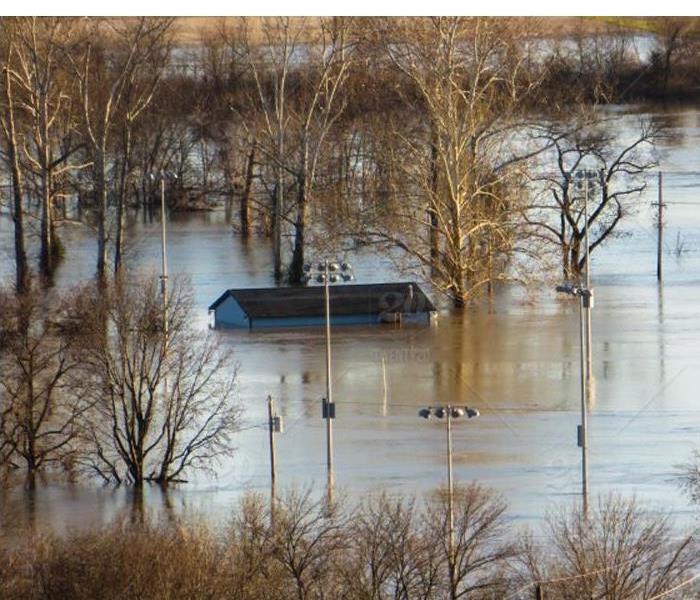 After water damage in your basement, Use good safety procedures.
After water damage in your basement, Use good safety procedures.
Any home or business can suffer water damage in the basement. It might be caused by a burst pipe, a storm, a leaking appliance, a flood, or one of many other common causes of water damage. Remember this first of all: If your basement has water damage SERVPRO of Glastonbury/Wethersfield recommends you keep safety as your number one priority. Here are a few quick tips.
Is your house safe?
If you’re not sure, don’t take a chance. Find somewhere else to stay until you’re certain your house is safe again.
Do you have electrical or "slip and fall" hazards?
After major storms in the Glastonbury/Wethersfield area, we see a lot of these hazards. Often, electrical power to even severely flooded homes is still live. A saturated environment with standing water that is close to energized electrical outlets, submerged wiring, and wet appliances is dangerous to you both during and after a flood. Slip and fall hazards include items submerged in the water that you can’t easily see and flooring area that may appear relatively dry and even but is actually uneven or wet enough to not safely support your footfall.
Are you only doing things you know are safe?
Some homeowners want to dig right in and start making repairs before they know the extent of the water damage and how best to fix the damage. Don’t take risks. Make a full assessment of the damage and tackle only those repairs you know how to do well.
Can you see?
If you have water damage in the basement can you see what and where you are walking on? Don't walk on or near an area that doesn't have sufficient lighting.
Are you trying to lift wet materials?
If so, be careful. When items are soaked with water they become dangerously heavy. You might also do further damage to an item that is water soaked by trying to lift or move it.
Contact A Water Removal Service
With any major basement water damage you’re wise to contact a professional water removal service like SERVPRO of Glastonbury/Wethersfield. You want the job done right and right away. That’s what we do. Never hesitate to call 860.633.8791 for help.
Why Us?
A SERVPRO of Glastonbury/Wethersfield highly trained technician can respond immediately to your water damaged basement issue. Our service crews have the experience, expertise, training, and equipment to restore your home or business quickly and safely. The sooner the water is removed and the drying process begun, the better condition your home or business will be in. And the cost to repair water damage will be lower.
Call SERVPRO of Glastonbury/Wethersfield to discuss. Call 860.633.8791. We’re the water removal service professionals who have saved property and saved money for the owners of flooded basements and water damaged properties. We serve homeowners and business owners in Glastonbury, Marlborough, Portland, Rocky Hill, and Wethersfield.
SERVPRO of Glastonbury/Wethersfield
IICRC Certified
Noemi Garcia
Certified SERVPRO technicians
Call 860.633.8791
Fax 860.216.2762
24-hour emergency service
Sewer Backups Demand Fast Action
5/9/2018 (Permalink)
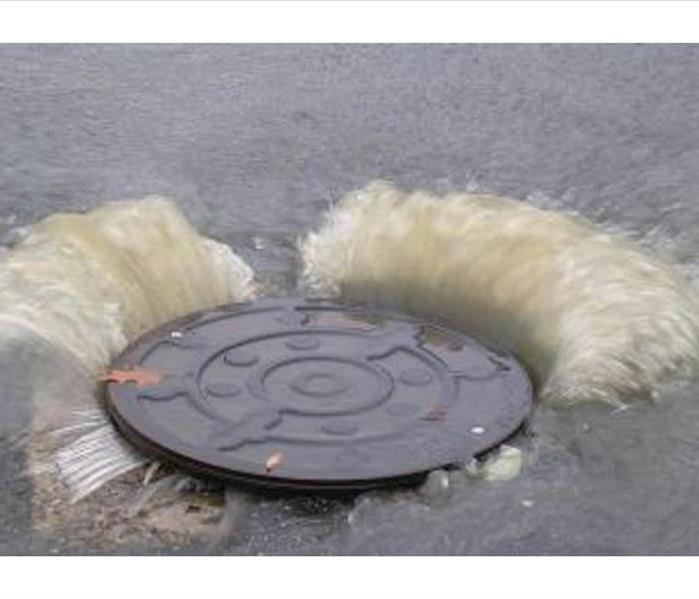 Handle a sewer backup as carefully and quick as you'd handle a fire or flood disaster
Handle a sewer backup as carefully and quick as you'd handle a fire or flood disaster
It may not seem like a sewer backup is in the same class of crisis as a fire or flood but it can be. If your sewer backs up you need to act fast. Sewer backup problems are major health hazards and emergencies. Sewer water is often packed with viruses, bacteria, and other microbes that can cause serious illnesses.
Start by knowing what type of sewer water backup you have:
Clean Water
If your sewer backs up from a clean source like a broken water supply line or leaking faucet professionals consider the backup clean water. But if you don’t treat clean water quickly it can become a more serious problem. If it sits too long clean water can degrade into gray water (category 2) or black water (category 3).
Gray Water
Experts use the term gray water to describe a sewer line backup that’s contaminated and could cause discomfort or illness. You have gray water (category 2) if your backup is from a washing machine overflow; a toilet overflow with some urine (no feces); or a dishwasher overflow. This type of sewer water backup can quickly degrade into black water (category 3) if not treated. Again, quick action is important.
Black Water
At SERVPRO of Glastonbury/Wethersfield and throughout the industry, this term describes grossly contaminated water. Sewer drain backups like this could cause severe illness or death if ingested. Be certain you and your family avoid all contact with black water. You have black water when you have flooding from rivers or streams; water from beyond the toilet trap; water from the toilet bowl with feces; or standing water that has begun to support microbial growth.
Prevent Sewer Backups
Your main sewer line can become clogged, which can cause sewage backups in your home. If the backups just from one toilet, sink or tub it may be a clog in that drain. If, however, every flush creates a sewage backup in your home, you likely have a blockage in your main sewer line. Most of these clogs can be prevented by a few simple steps:
• Don’t use your toilet as a waste basket--Flushing facial tissues, napkins, diapers and other waste down your toilet creates clogs.
• Use your garbage disposal wisely--Avoid dumping large quantities of anything that can become lodged in your sewer line down your garbage disposal.
• Don’t pour grease down your drain--Grease and fat, although liquid when poured down your drain, can harden within your plumbing, collecting debris and creating a stubborn clog.
We Can Help
Call SERVPRO of Glastonbury/Wethersfield whenever you have sewer backup problems. We’re trained in the safest, most advanced, and quickest ways to eliminate all sewer backups and restore your property completely. From Glastonbury to Portland, Wethersfield to Marlborough and anywhere in between, we can help.
SERVPRO of Glastonbury/Wethersfield
IICRC Certified
Noemi Garcia
Certified SERVPRO technicians
Call 860.633.8791
Fax 860.216.2762
24-hour emergency service
 SERVPRO offers Glastonbury area water damage and mitigation "Like it never even happened." We stock advanced equipment from extraction to drying.
SERVPRO offers Glastonbury area water damage and mitigation "Like it never even happened." We stock advanced equipment from extraction to drying.






 24/7 Emergency Service
24/7 Emergency Service




























